Dear friends,
Our real tour began in Casablanca, the port city and commercial hub in western Morocco, fronting the Atlantic Ocean. The origin of the town is not known but an Amazigh (Berber) village called Anfa stood on the present-day site in the 12th century. Later it became a pirates’ base for harrying Christian ships and was destroyed by the Portuguese in 1468. The Portuguese returned to the area in 1515 and built a new town called Casa Branca (“White House”). It was abandoned in 1755 after a devastating earthquake, but the Sultan Sīdī Muhammad ibn Abd Allāh rebuilt the town in the late 18th century. Spanish merchants, who named it Casablanca, and other European traders began to settle there. The French after a time outnumbered other European settlers, and the name Maison Blanche (also meaning “White House”) became as common as Casablanca. The town was occupied by the French in 1907, and during the French protectorate (1912–56) Casablanca became the chief port of Morocco. Since then, the growth and development of the city have been continuous and rapid.
View from my hotel room when we arrived in Casablanca with Hassan II Mosque dominating the cityscape
It was even more impressive floodlit after dark
So with the whole group of thirteen travelers now aboard, we began our ‘Camels to Casbah’ travel in Morocco. We were up early and spent the first morning together visiting the impressive Hassan II Mosque, and happily being early we were able to visit without too many others and could marvel at the size and beauty of the mosque.
The Hassan II Mosque is the largest functioning mosque in Africa and is the 14th largest in the world. Its minaret is the world’s second tallest at 210 metres (689 ft). Completed in 1993, it was designed by Michel Pinseau under the guidance of King Hassan II and built by Moroccan artisans from all over the kingdom. The minaret is 60 stories high topped by a laser, the light from which is directed towards Mecca. The mosque stands on a promontory looking out to the Atlantic Ocean; worshippers can pray over the sea but there is no glass floor looking into the sea. The walls are of hand-crafted marble and the roof is retractable. A maximum of 105,000 worshippers can gather together for prayer: 25,000 inside the mosque hall and another 80,000 on the mosque’s outside ground.
Deserted for our visit early in the morning
One of the walkways leading to the mosque
A beautiful fountain on the outside wall of the mosque
Arches and doorways of the mosque and an example of the magnificent geometric tile patterns
Looking across to the side windows of the mosque
A view down the full length of the mosque, and highlighting the ceiling panels and chandeliers
Another angle showing the beautiful carved arches inside the mosque
Below the main floor of the mosque there were also beautifully designed ablution areas for men and for women
Another view of the lower level areas where worshippers can make their ritual cleansing before prayer
More of the beautiful carved and tile patterns in the ablution areas of the mossque
A detail of one of the great bronze doors of the mosque
As we were leaving, others were arriving which made for this lovely shot – silhouettes and reflections
Looking back for a last look at the Hassan II Mosque, with the recent rain
bringing out the colors of the huge mosaic forecourt
Leaving Casablanca behind his, we travelled towards Rabat, the capital of Morocco and I was able to capture a couple of photos as we travelled of the countryside and the people who farm and work there.
Typical landscape with horses, donkeys, olive trees and small farmhouses
Sitting calmly as his donkey takes him homeward
A shepherd with his sheep, taking them to a new pasture along the road
At work in the salt ponds
Rabat was founded in the 12th century by the Almohads. The city grew at first but went into an extended period of decline following the collapse of the Almohads and in the 17th century, Rabat became a haven for Barbary pirates. When the French established a protectorate over Morocco in 1912 they made Rabat its administrative center. Then, when Morocco achieved independence in 1955 Rabat became its capital.
We lunched in a seafood restaurant overlooking the beach at Rabat, with a lively sea and a storm brewing
The impressive walls of the Kasbah
The Kasbah of the Udayas is the oldest part of the present-day city, built by the Almohads in the 12th century. It was later refortified and expanded by the corsairs and the ‘Alawi dynasty in the 17th and 18th centuries. The kasbah is now a residential district with traditional houses painted white and blue on the outside. Its southern section includes the “Andalusian Garden”, landscaped in the 20th century. The city’s historic walls were first built by the Almohad caliph Ya’qub al-Mansur and completed in 1197, with later additions in the 17th and 19th centuries.
Looking back to the lighthouse and Atlantic Ocean with a crowded cemetery in the foreground
One of the streets and buildings in the kasbah
The alleyways and houses inside the Kasbah, now a residential area
An imposing square within the Kasbah
Of course there were many cats here as well, lying at doorways …
… or showing off her offspring so obviously hers …
… or hiding from the strangers. Could this one be entitled ‘Peeping Tom”?
Looking out to the Atlantic Ocean from the high wall of the Kasbah
The fortified wall of the Kasbah and looking out to the breakwaters along the coast
The Rabat fishing fleet safe from the coming storm
A part of the “Andalusian Garden”, landscaped in the 20th century in the southern part of the Kasbah
And where there is a canon, there will also be a small boy posing for the camera
A second important visit of in Rabat was to the Mausoleum of Mohammed V – the approach, flags flying
Each of the gates to the Mausoleum grounds is guarded by a mounted soldier, with a cream cloak
The steps leading up to the beautifully carved facade of the mausoleum
The Mausoleum of Mohammed V is located across from the Hassan Tower in Rabat, and contains the tombs of the Moroccan king Mohammed V and his two sons, late King Hassan II and Prince Abdullah. The complex was designed by Vietnamese architect Cong Vo Toan using traditional forms with modern materials. The rich materials, as well as the deliberate use of historical crafts and motifs, is meant to not only pay tribute to Mohammed V but also to evoke his own efforts to encourage traditional craftsmanship as a means of promote a sense of Moroccan identity.
Construction began in 1961 and involved renovations to the esplanade of the ruined Almohad-era mosque to which the Hassan Tower belonged. Construction was completed in 1971 and Mohammed V’s body was transferred here that same year. His son Abdallah was buried here in 1983. Hassan II was also buried here upon his death in 1999.
Each of the doors into the mausoleum is also guarded by a soldier, these with red cloaks
And inside, each of the corners is also guarded these soldiers in green cloaks and embroidered jackets
The stunning filigree and stained glass dome of the mausoleum
At the end of this full day of sightseeing in Casablanca and Rabat we were welcomed into the Villa Mandarine. Set in three acres of beautifully landscaped gardens, the 36-room riad, a former private home is an oasis in Rabat’s residential district.
An elegant sculpture of a horse stands close to the entrance to the riad
A perfect terrace on which to relax and enjoy a cocktail, as we did
The charming reception area …
… and a beautiful staircase leading up to the second floor bedrooms
A traditional lantern lit the way to my room on the ground floor
My room – a perfect place to rest for the night
Just a colorful flower from outside my room to end this entry in Joanna’s Journal
I hope you have enjoyed this brief look at some of the important historic and religious sites of Casablanca and Rabat, and you will look forward as well to my next story which will feature our visit to the Roman ruins at Volubilis and the white-washed town of Moulay Idriss.
Wishing you, my friends and followers, all the best,
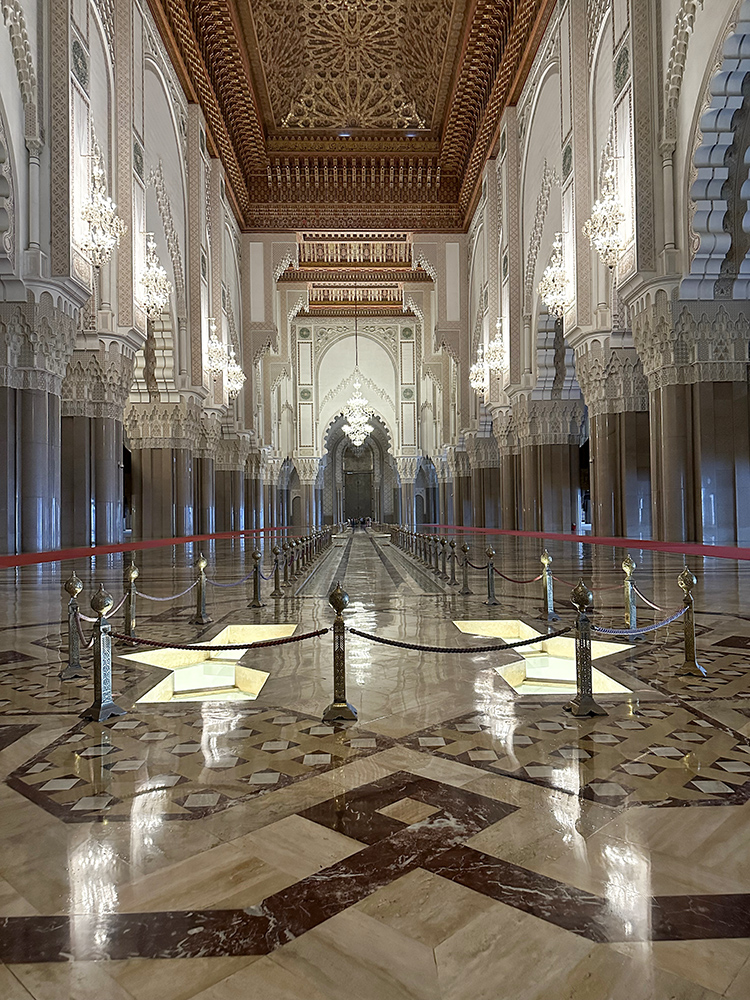
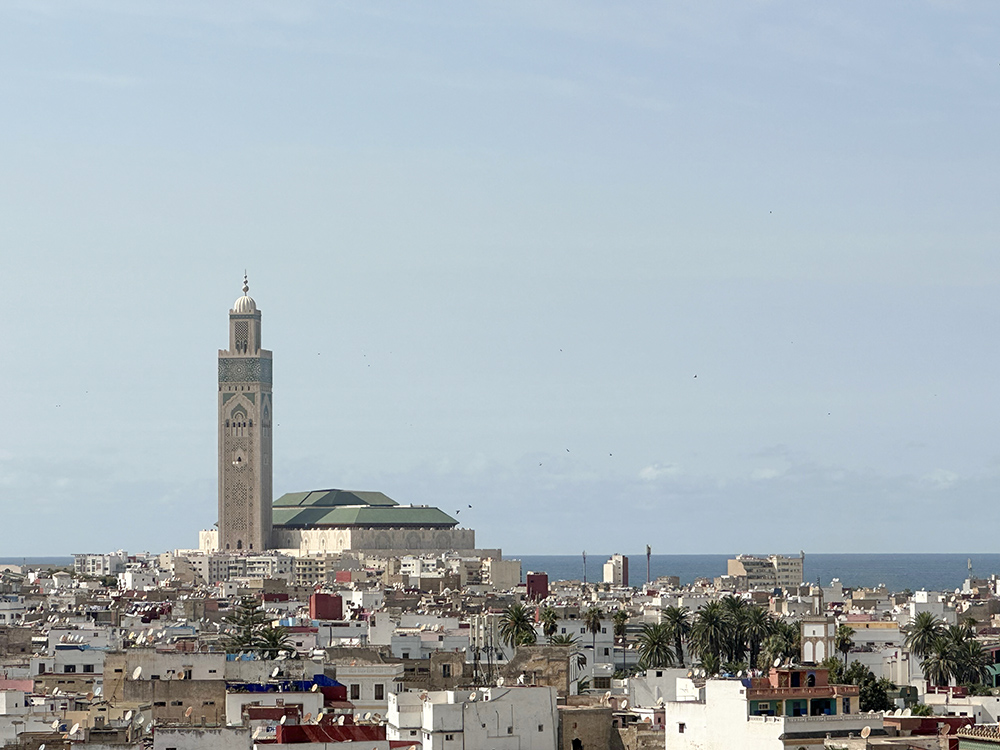
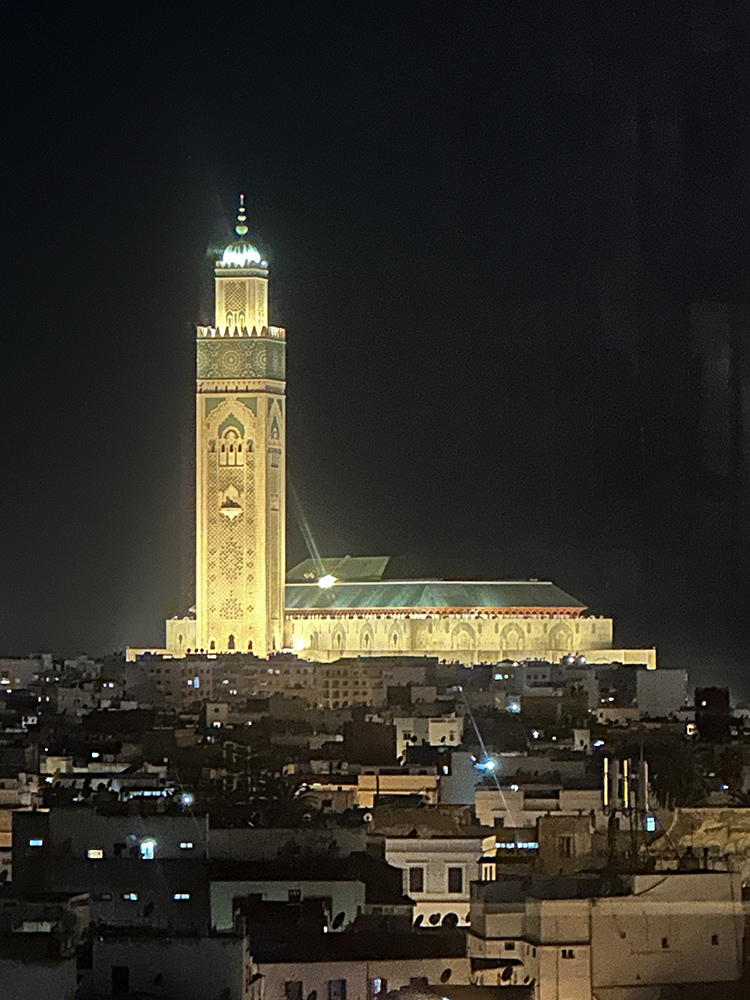

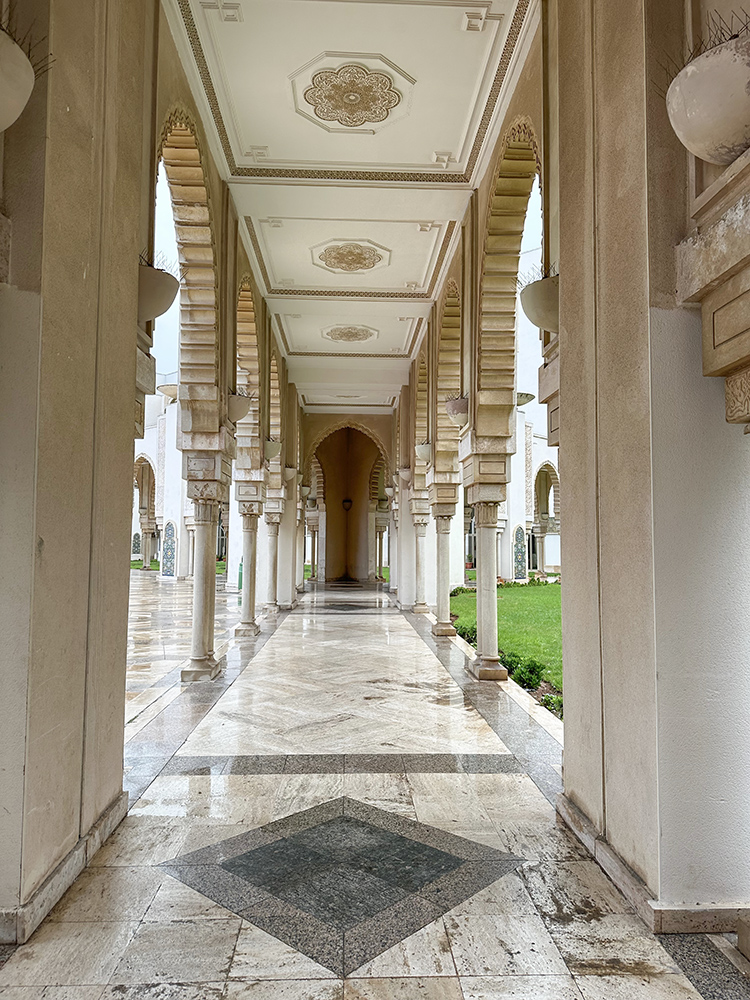
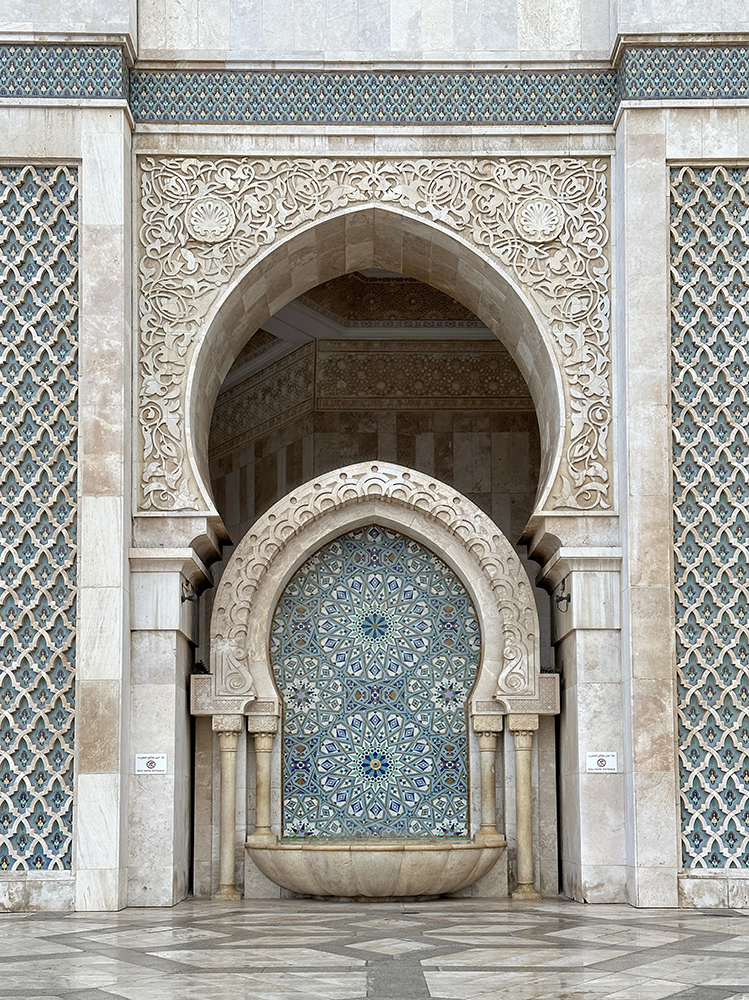
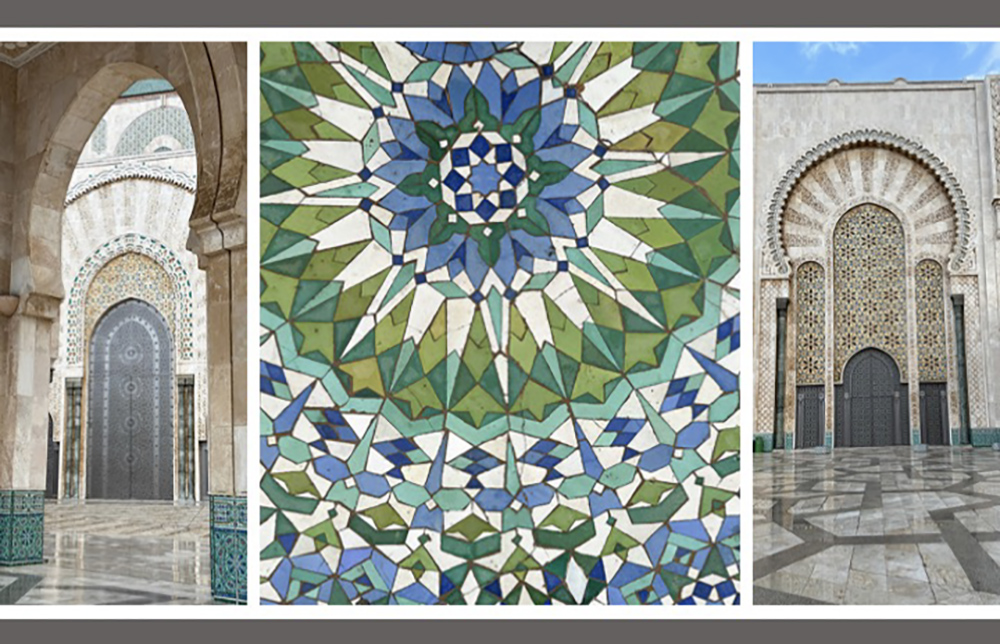
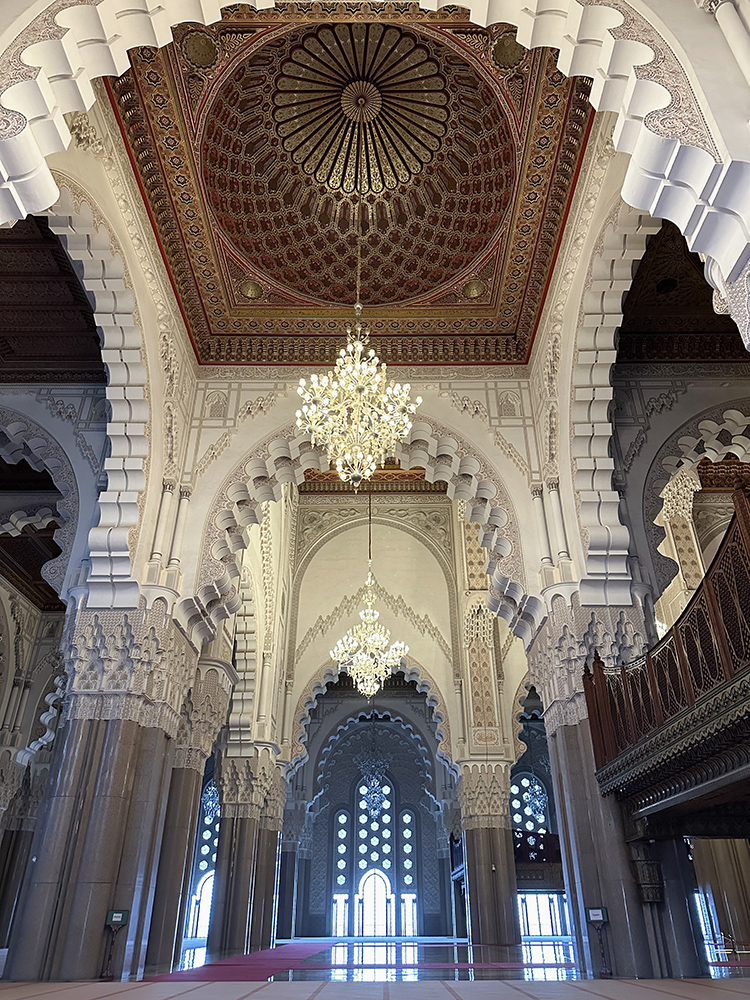
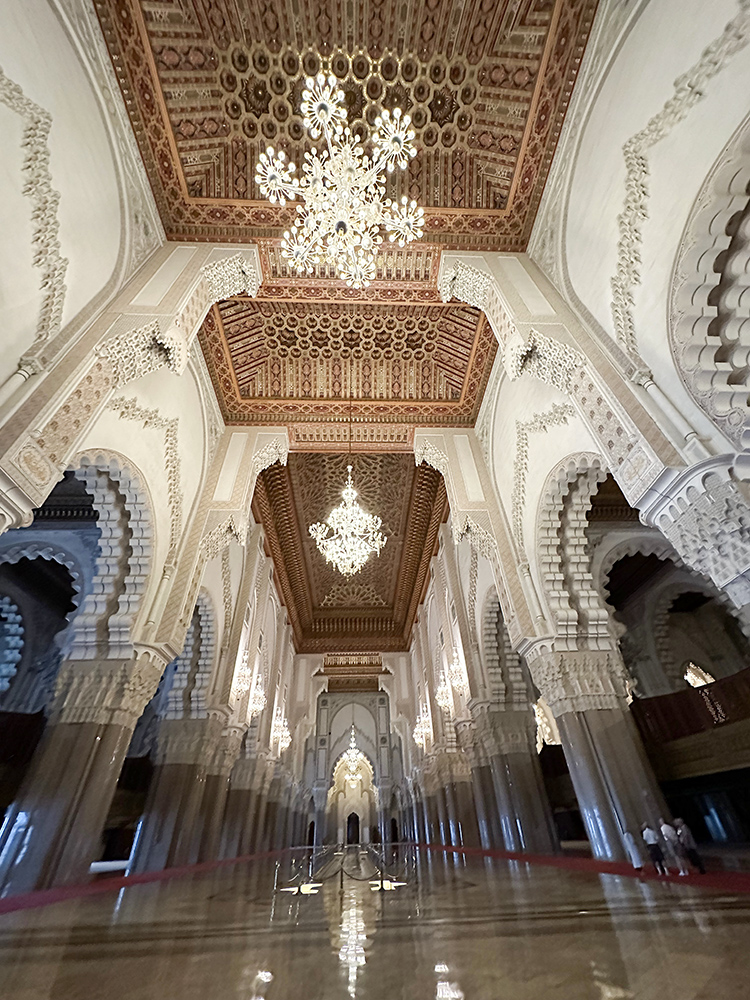
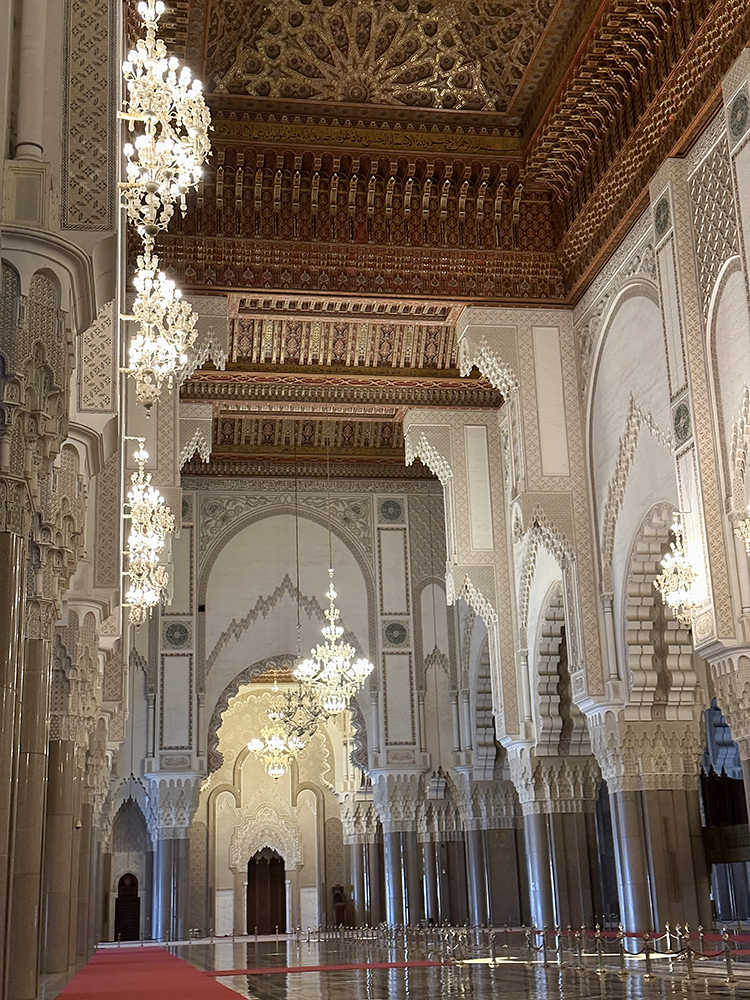
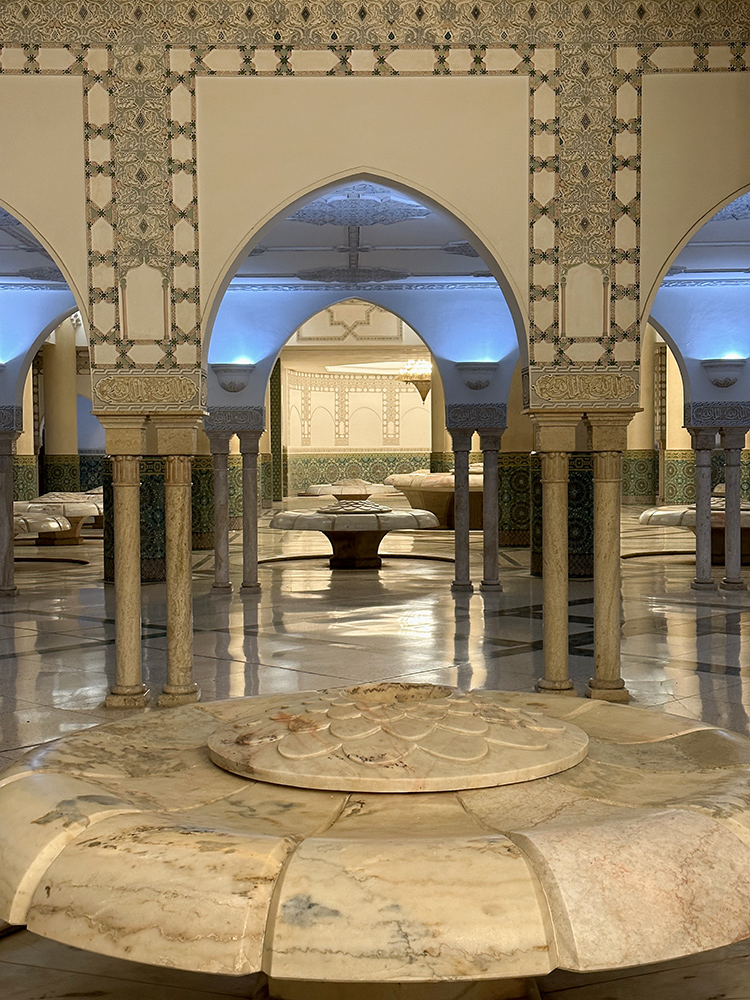
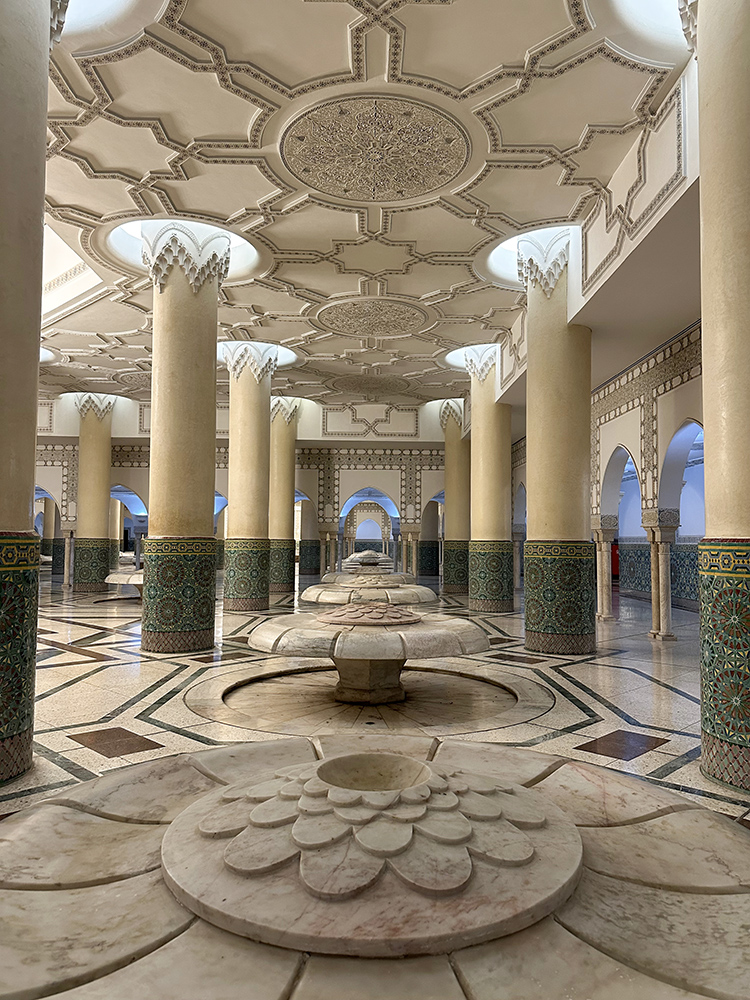
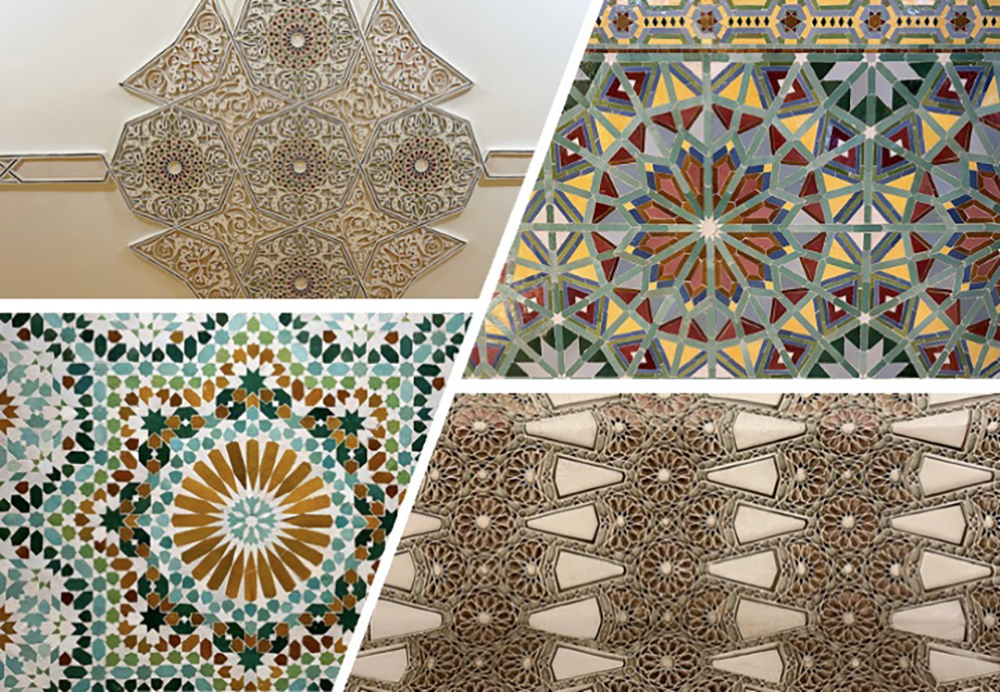
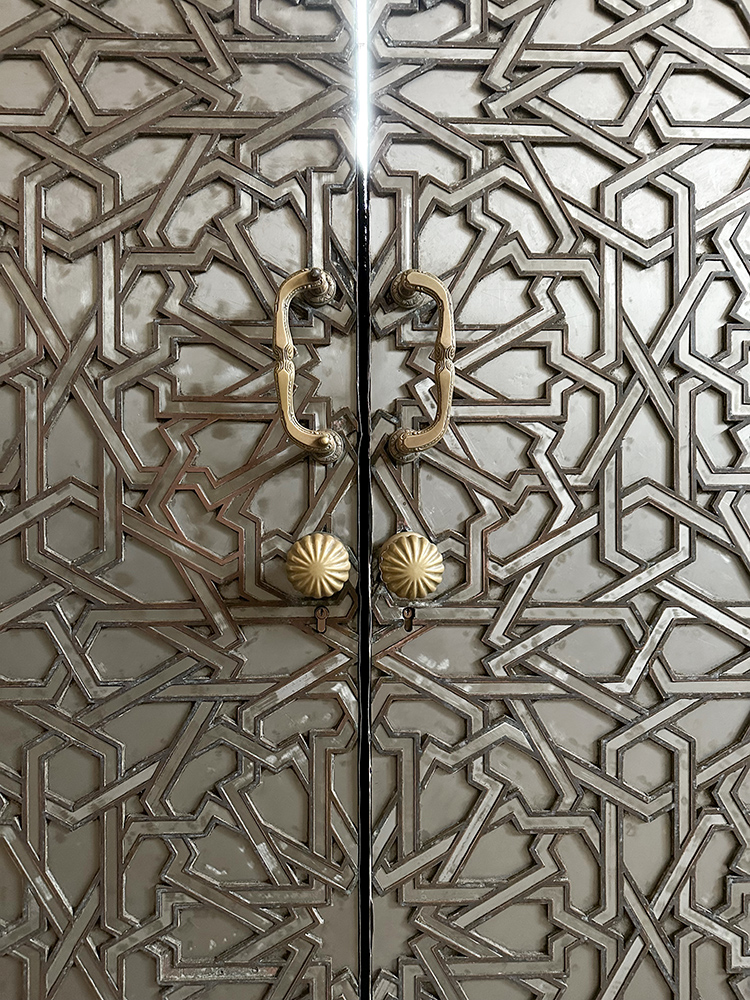
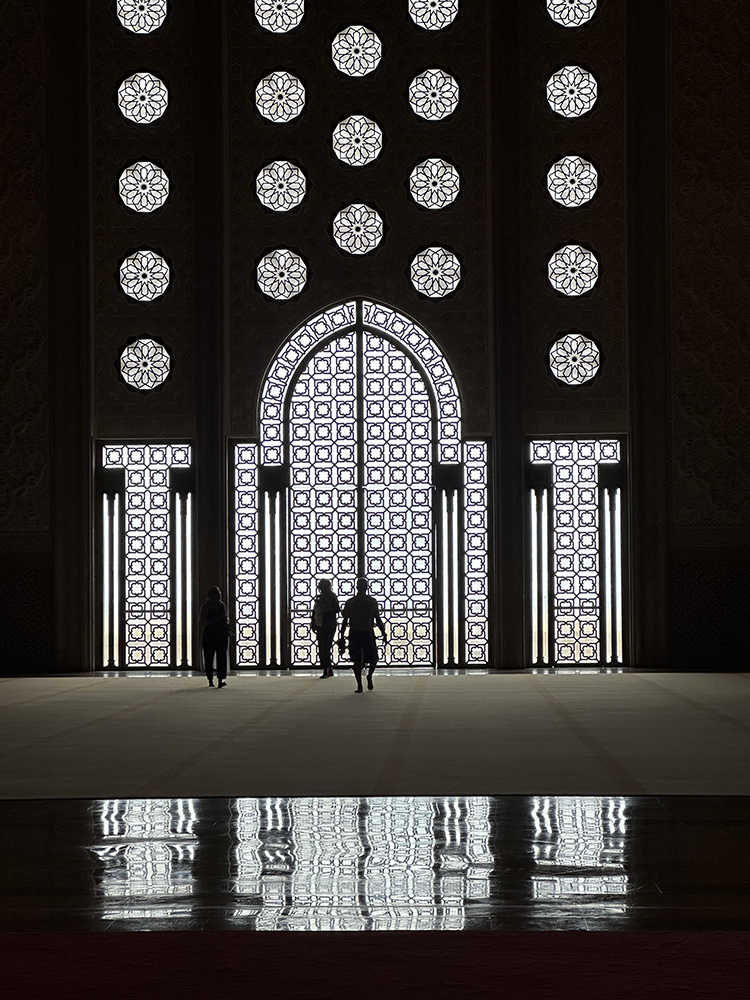
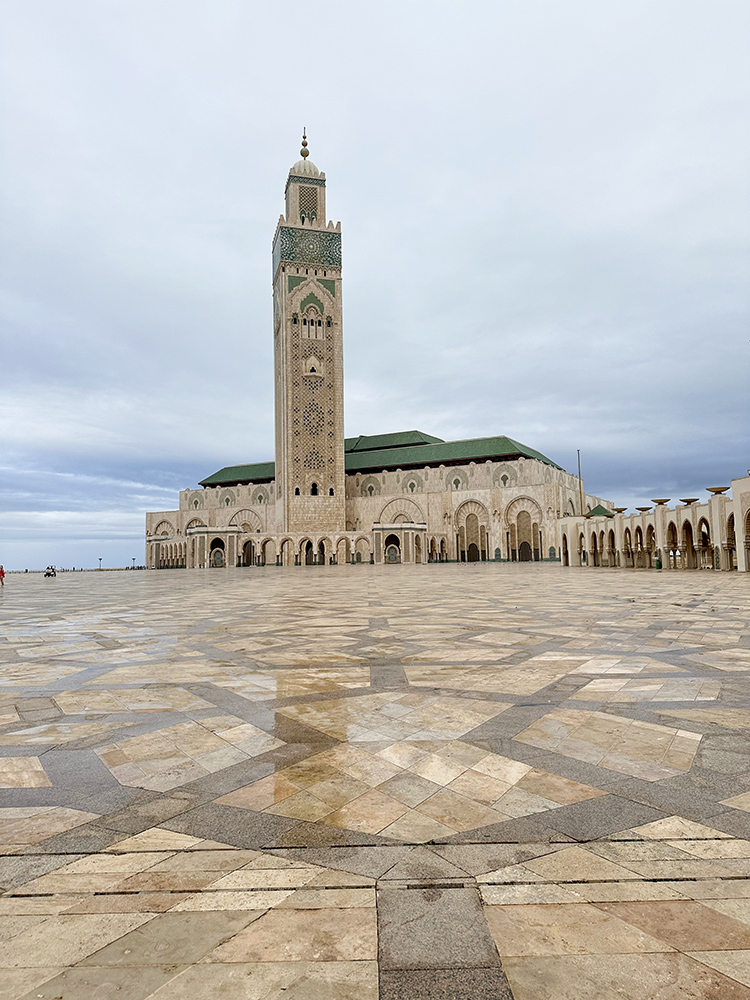
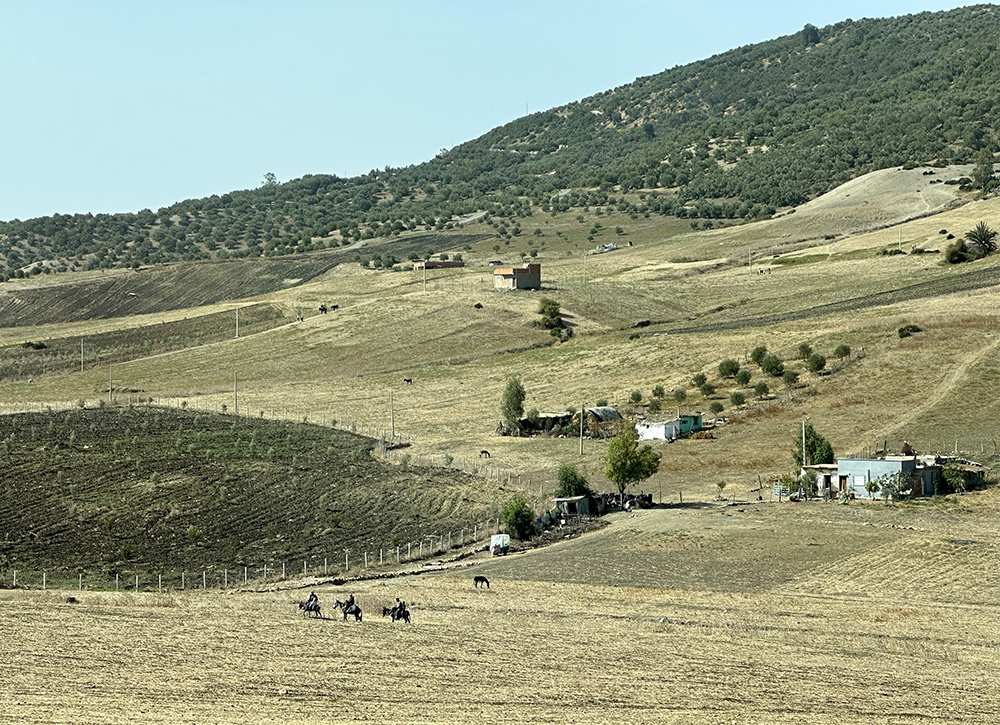
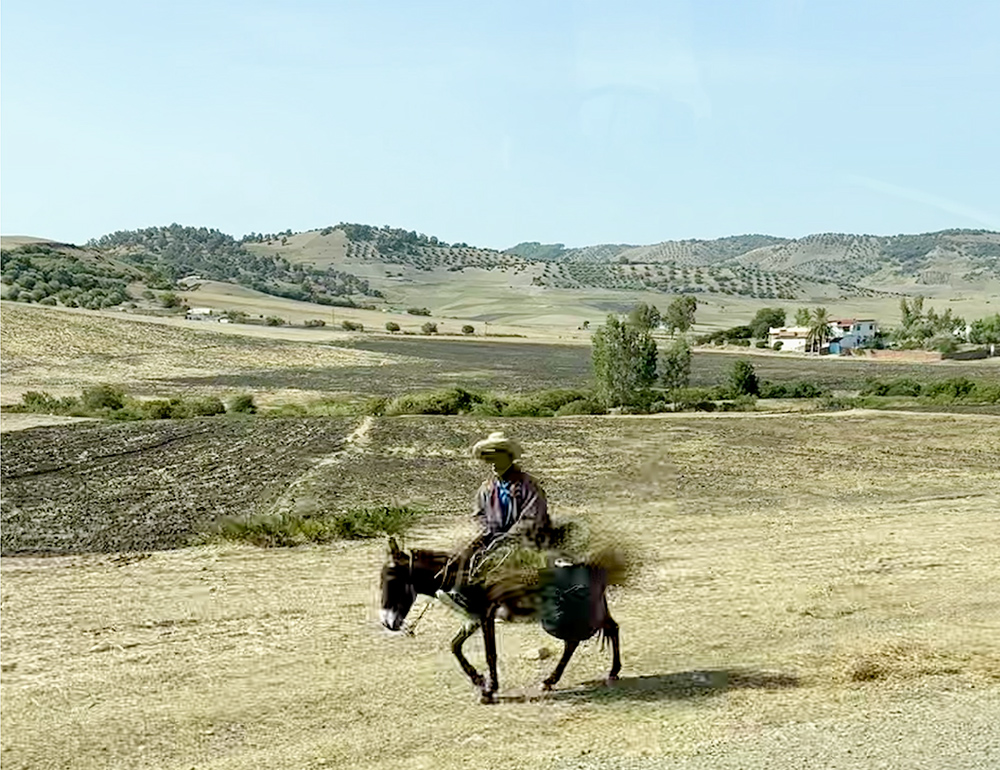
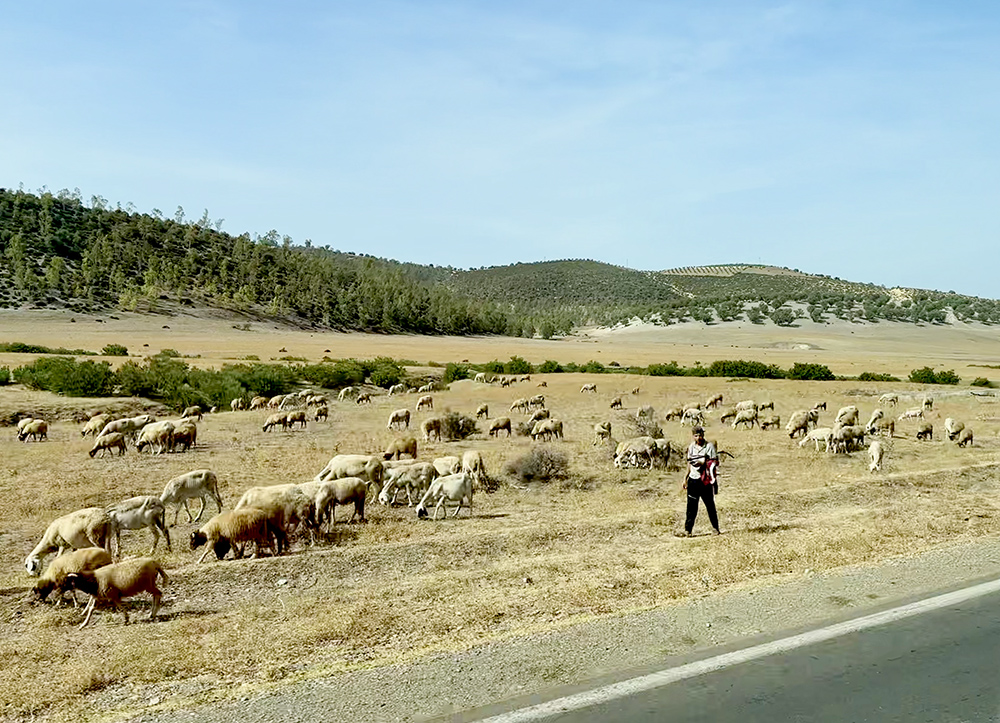
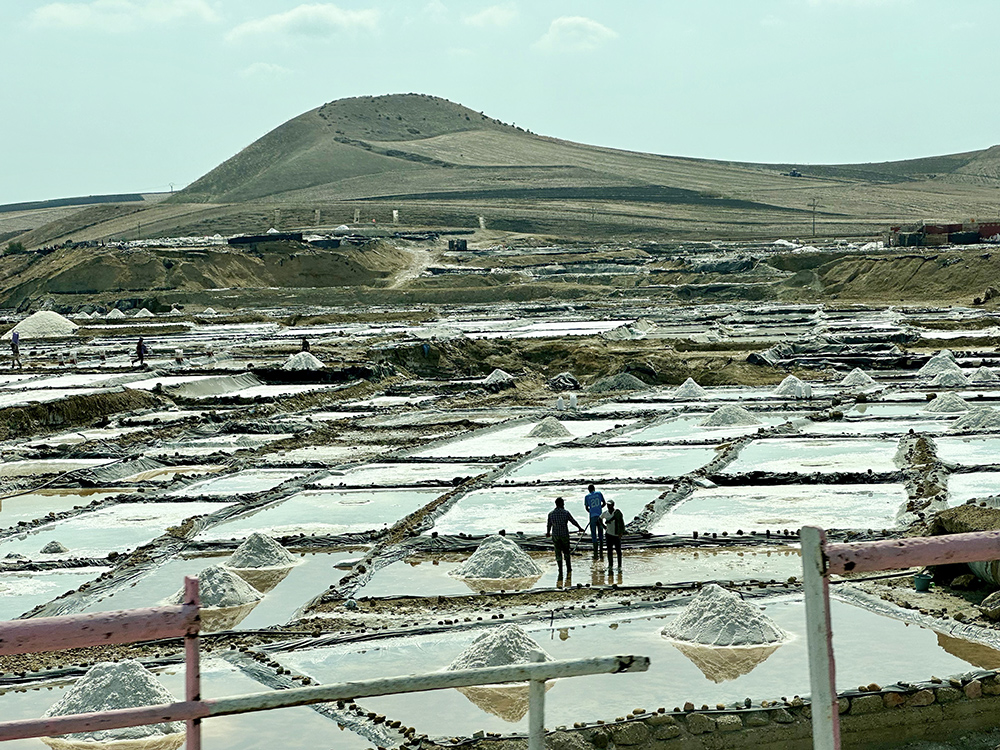
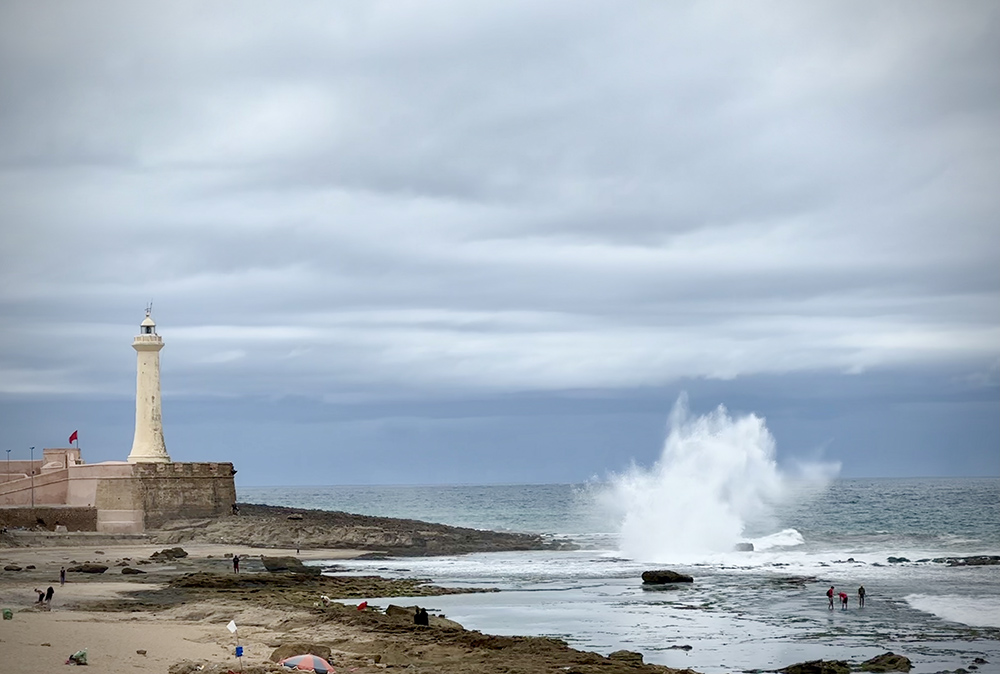
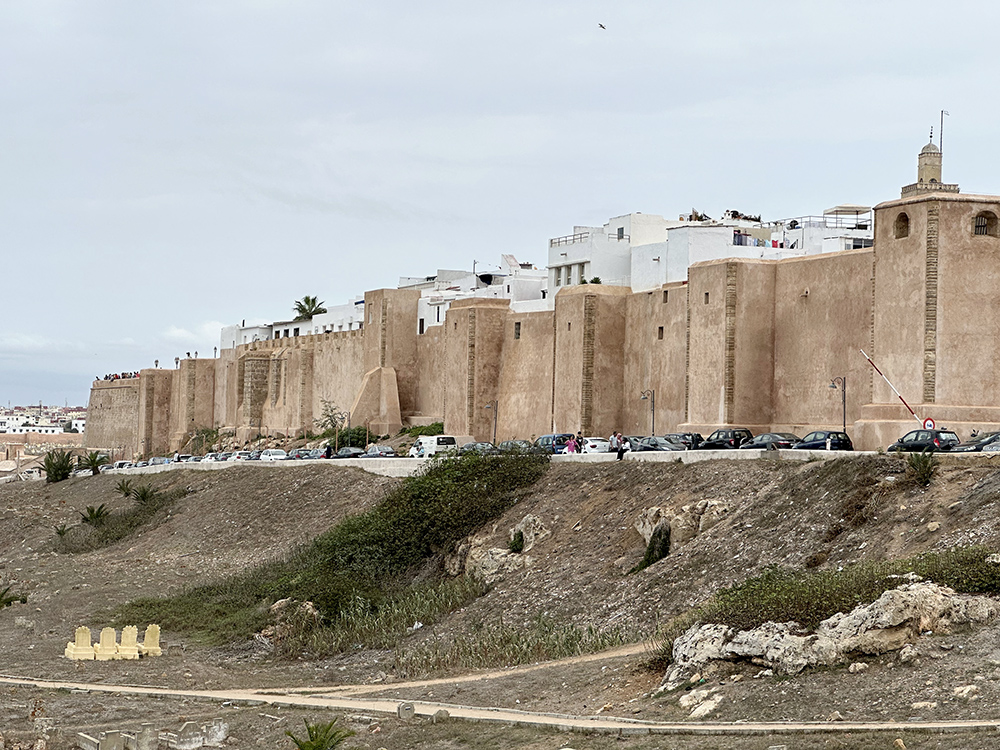
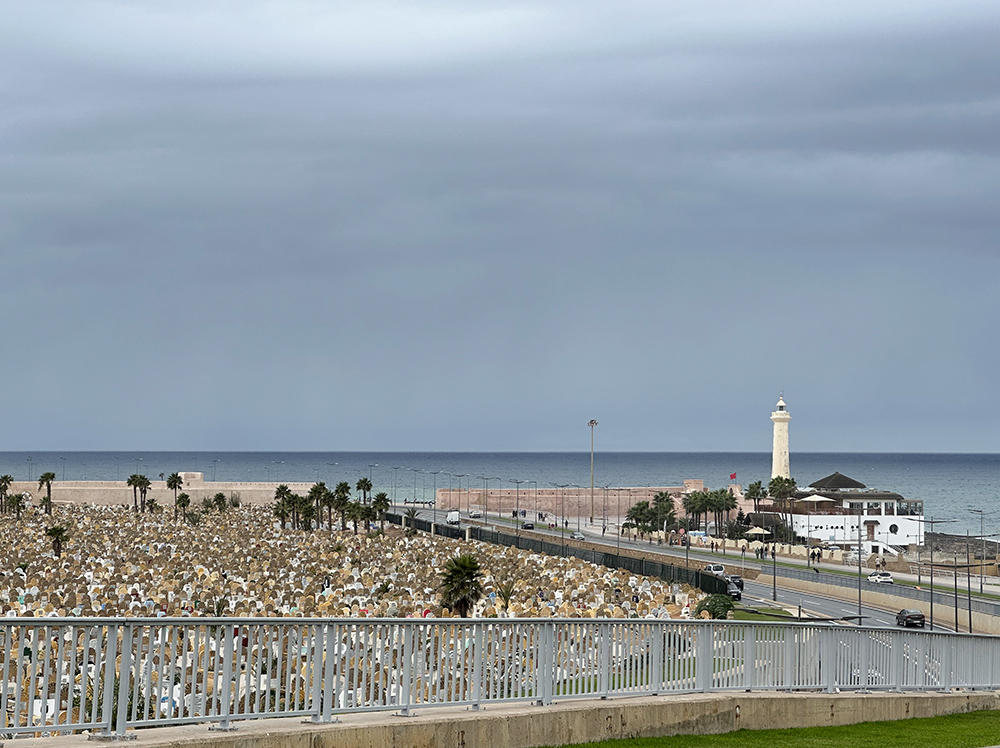
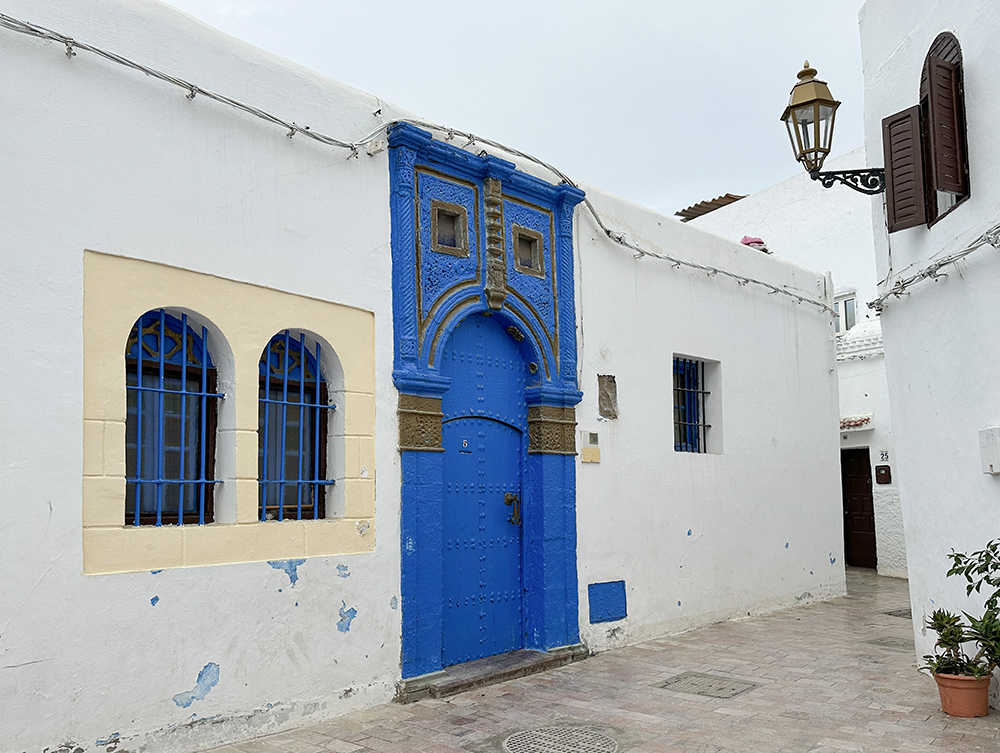
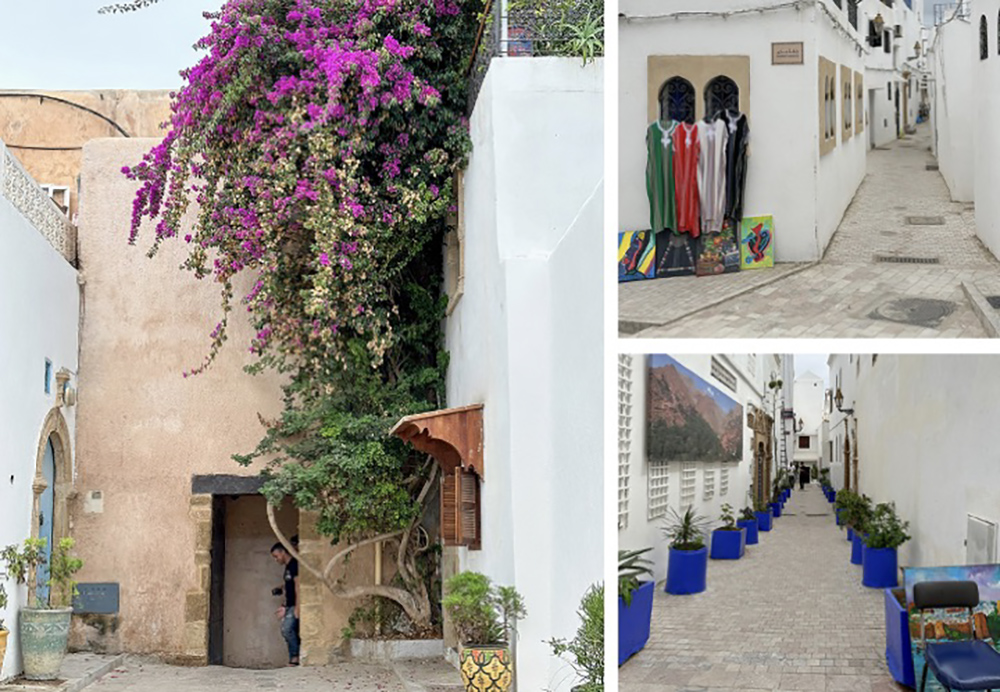
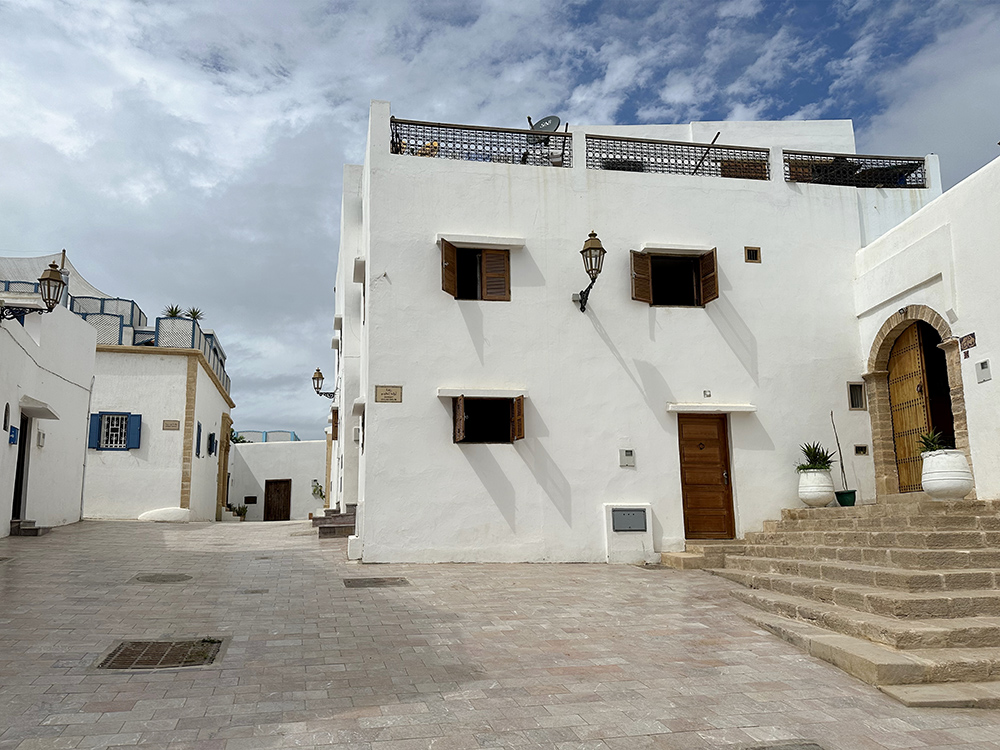
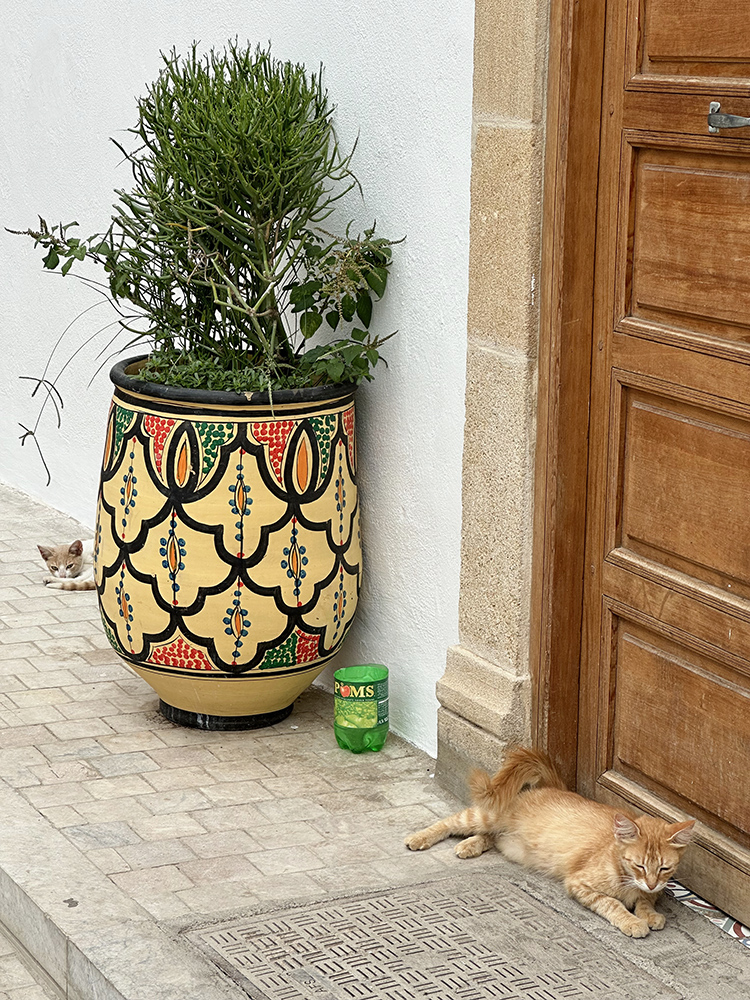
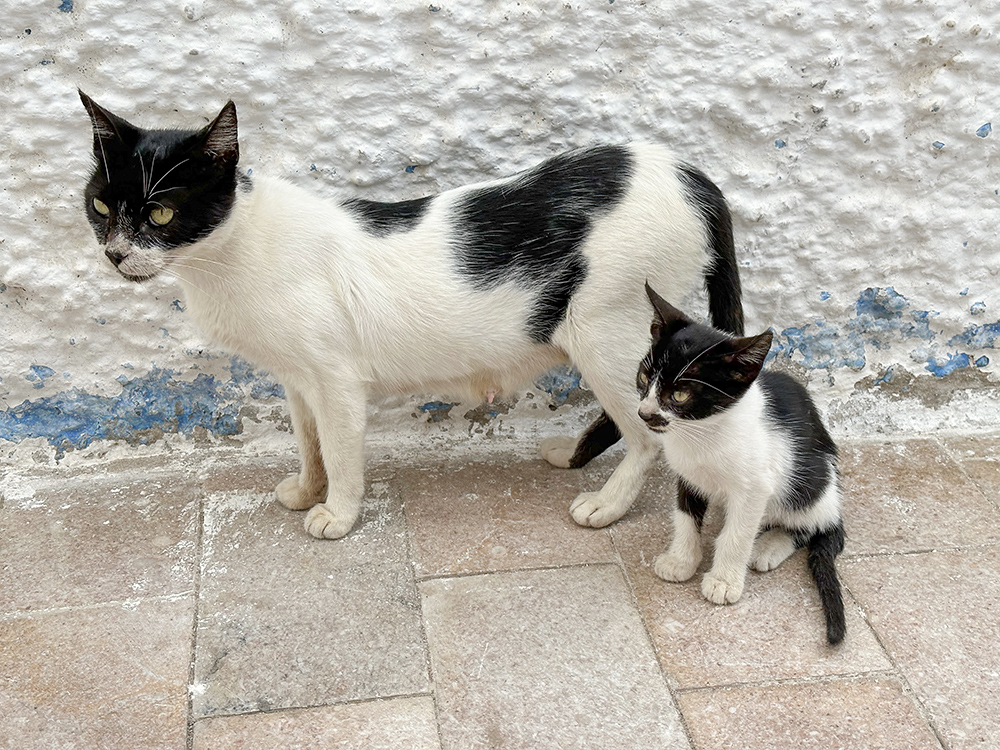
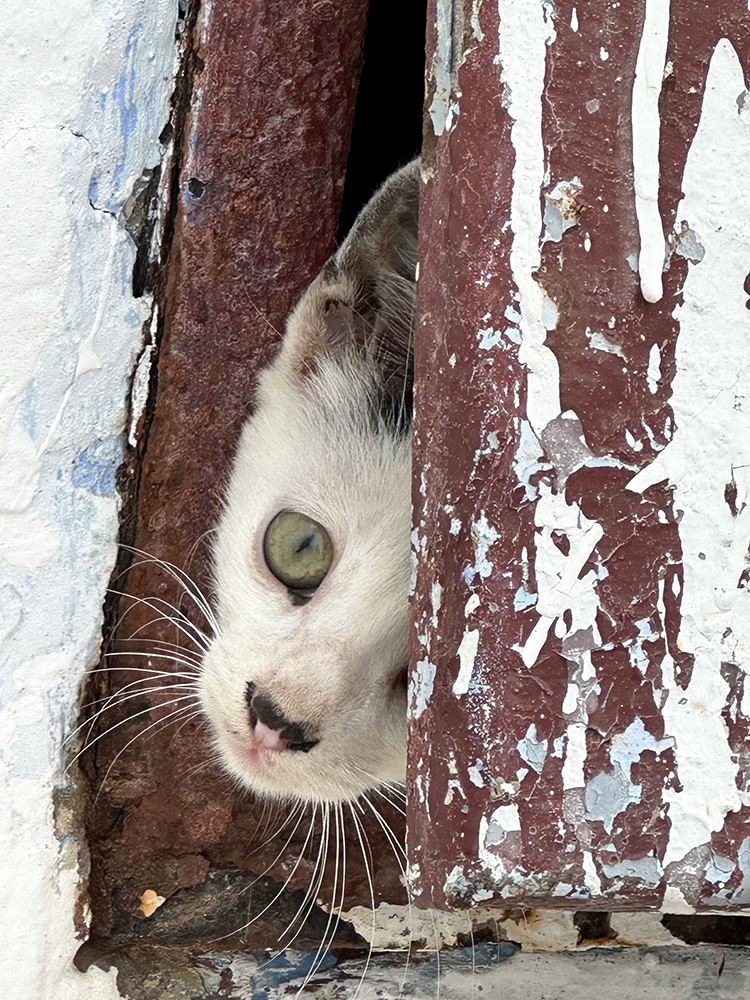
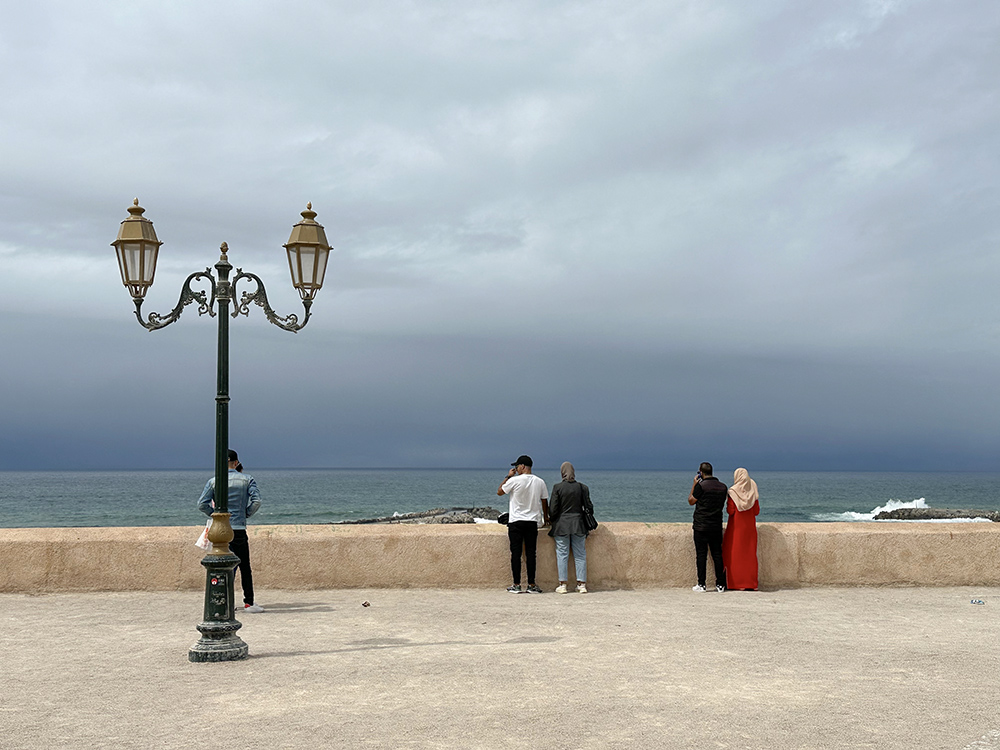
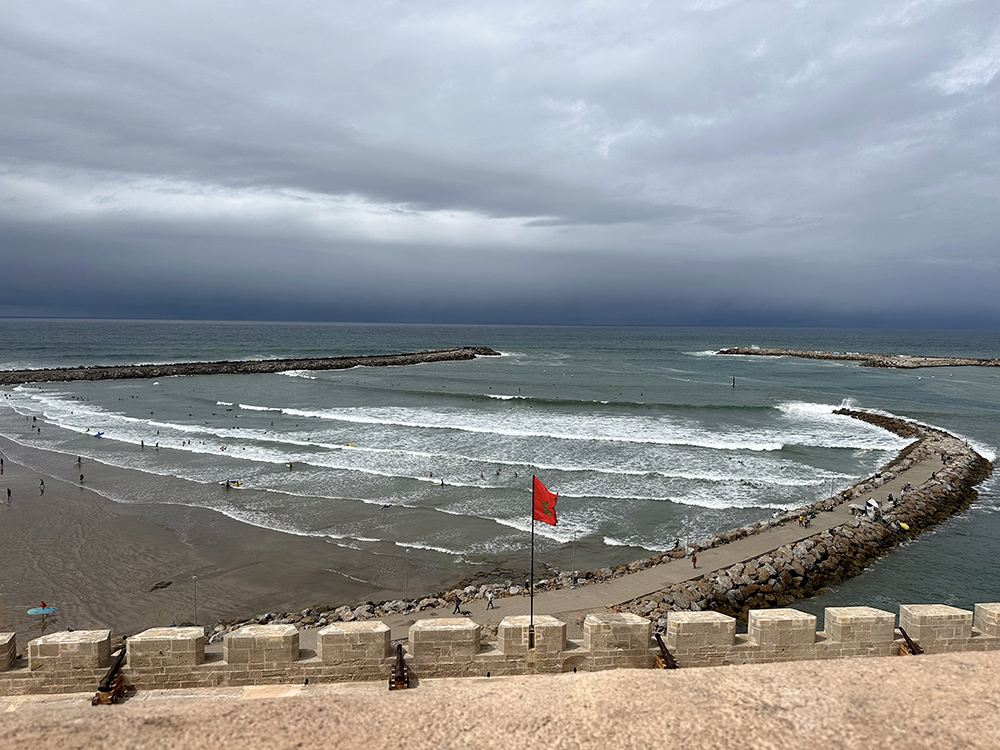
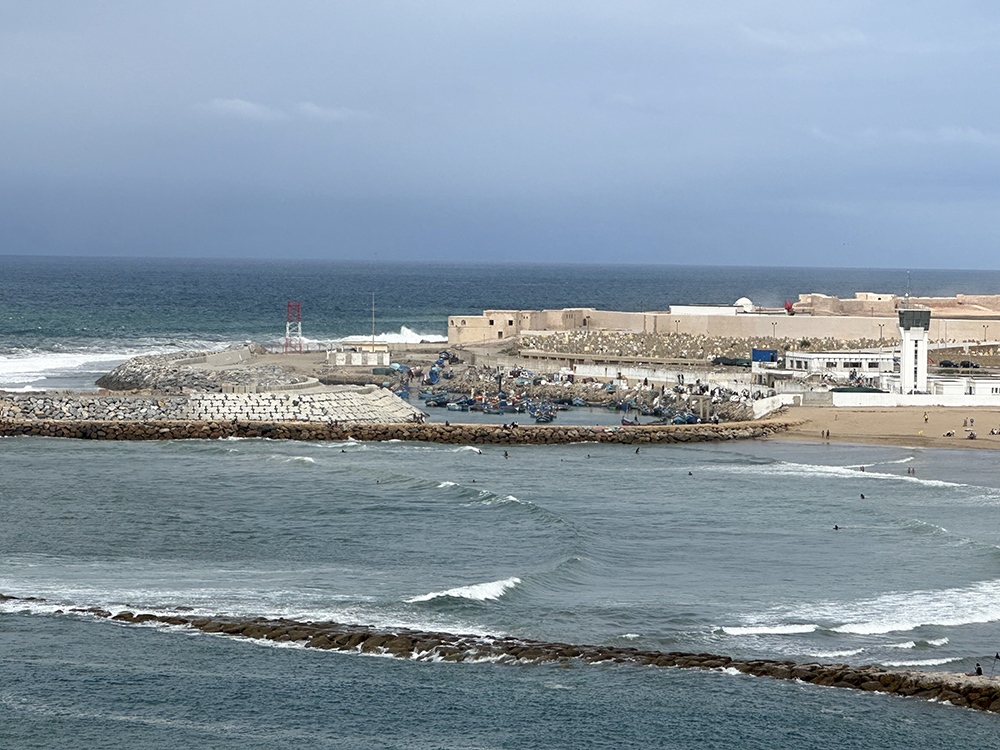
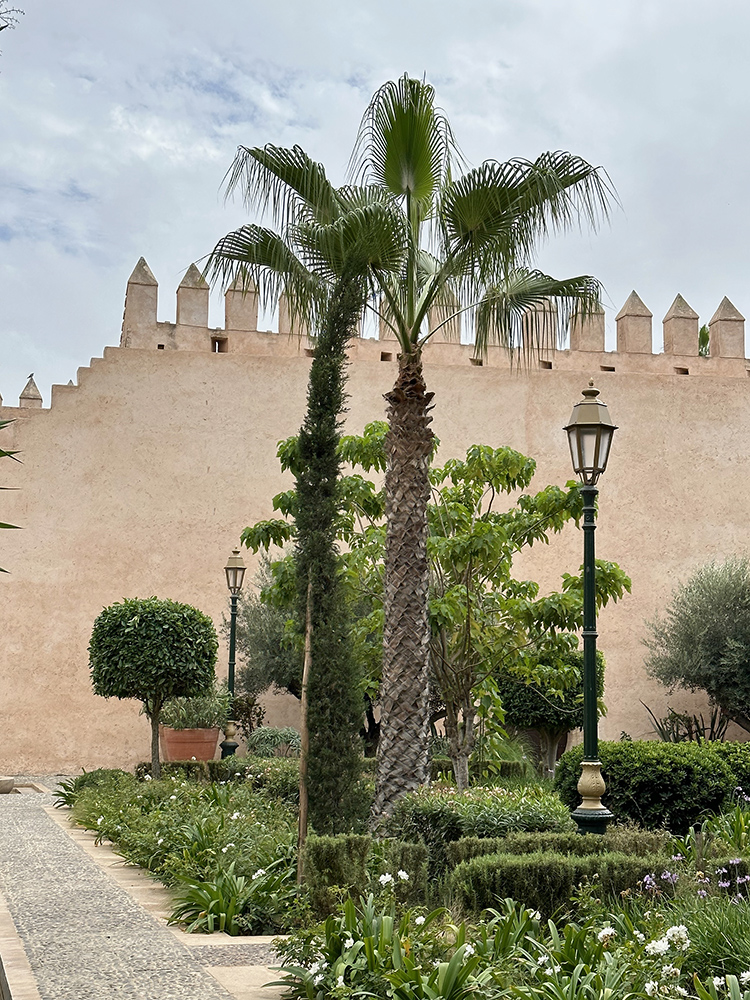
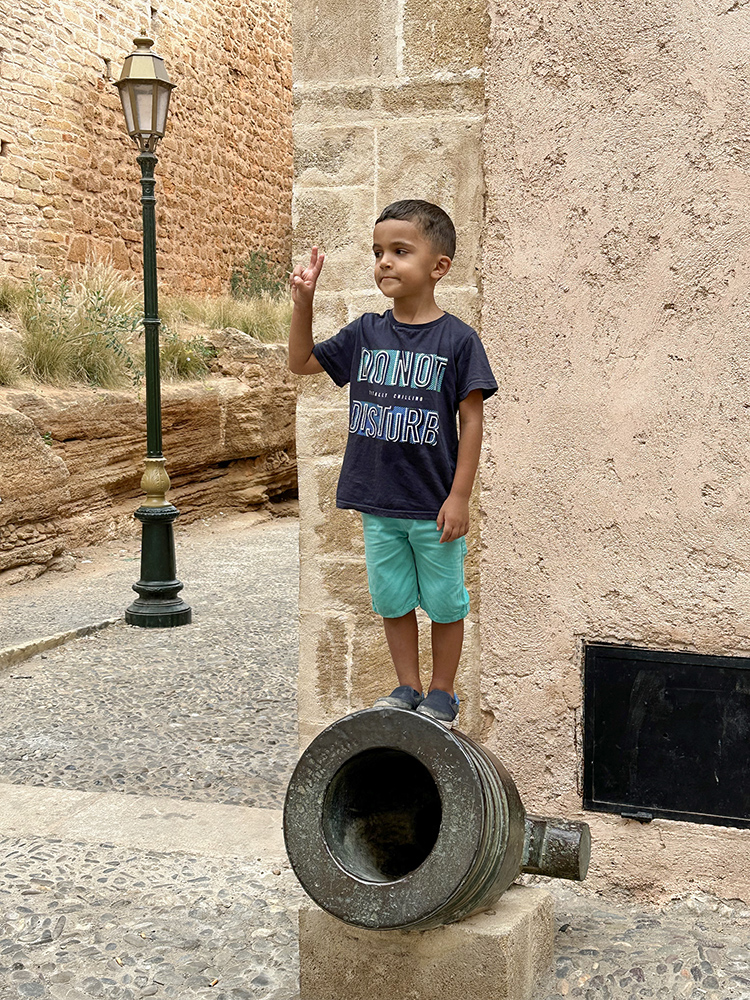
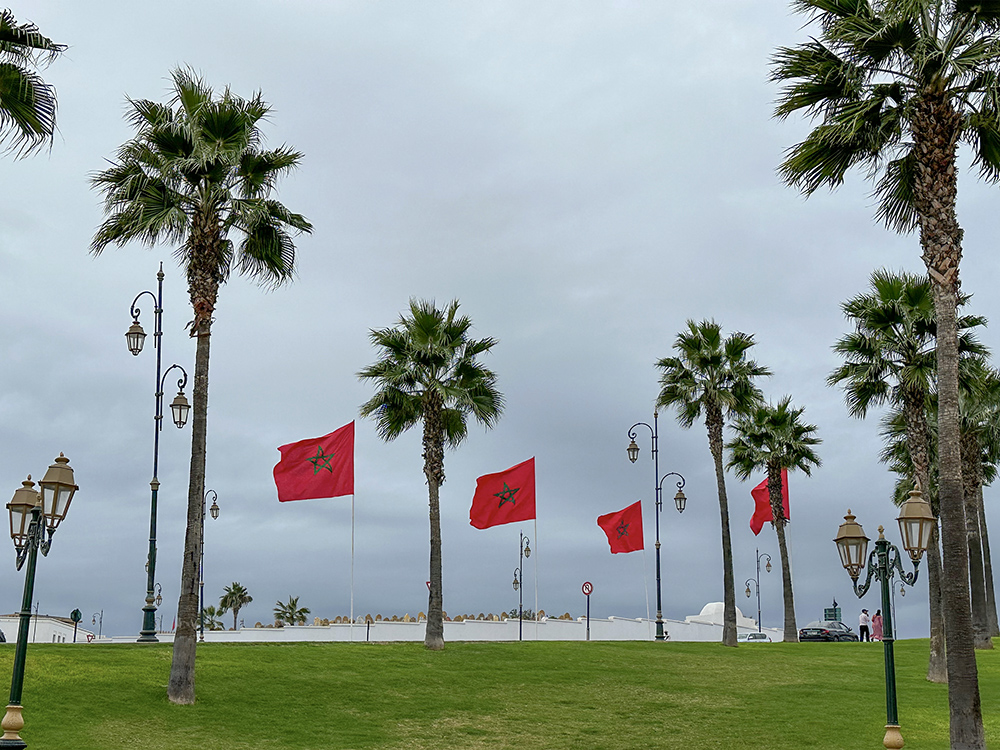
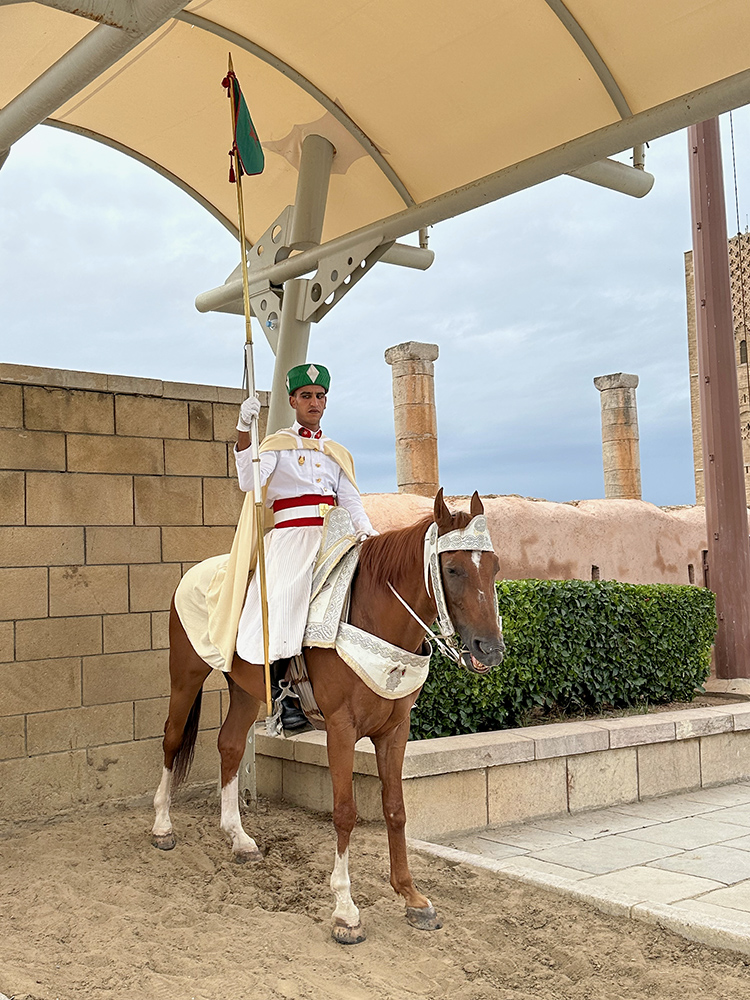
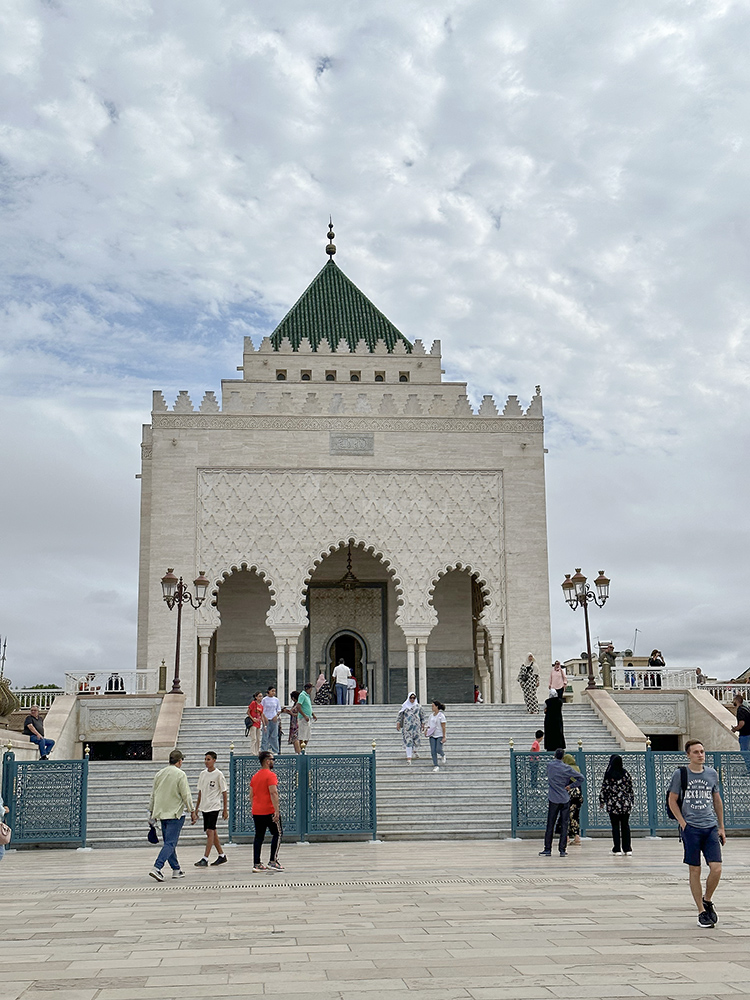
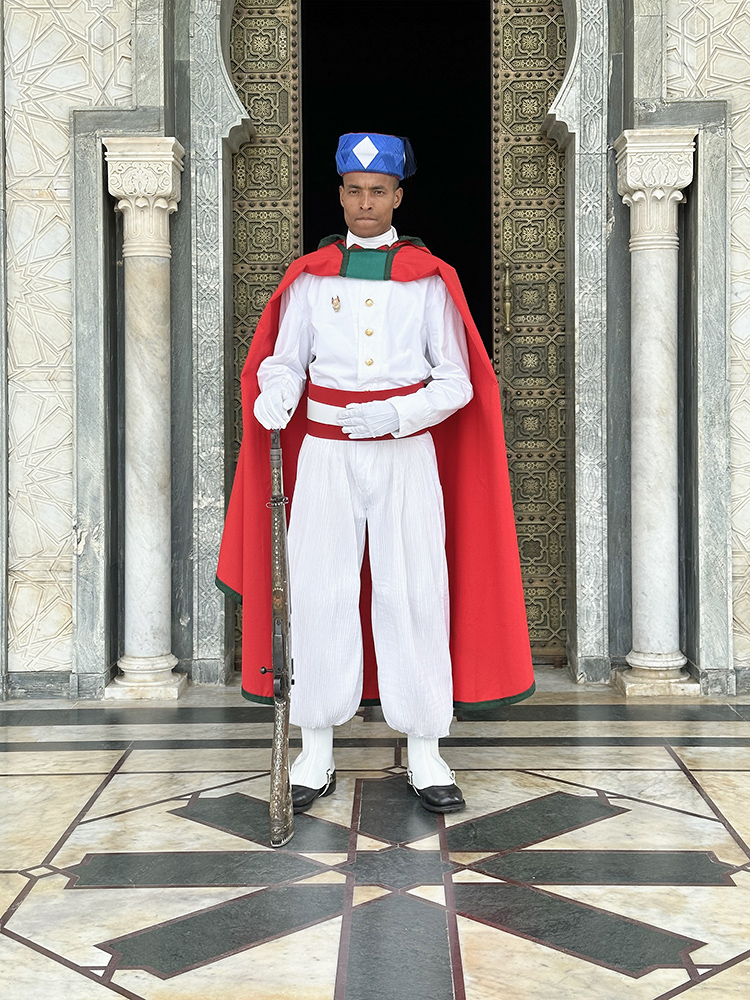
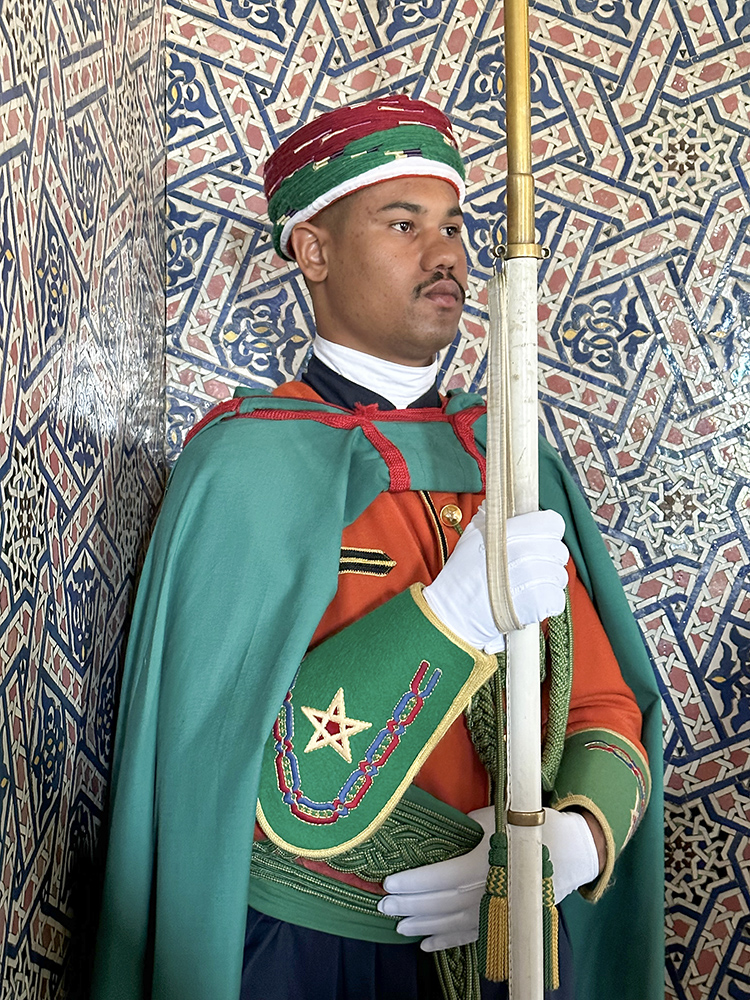
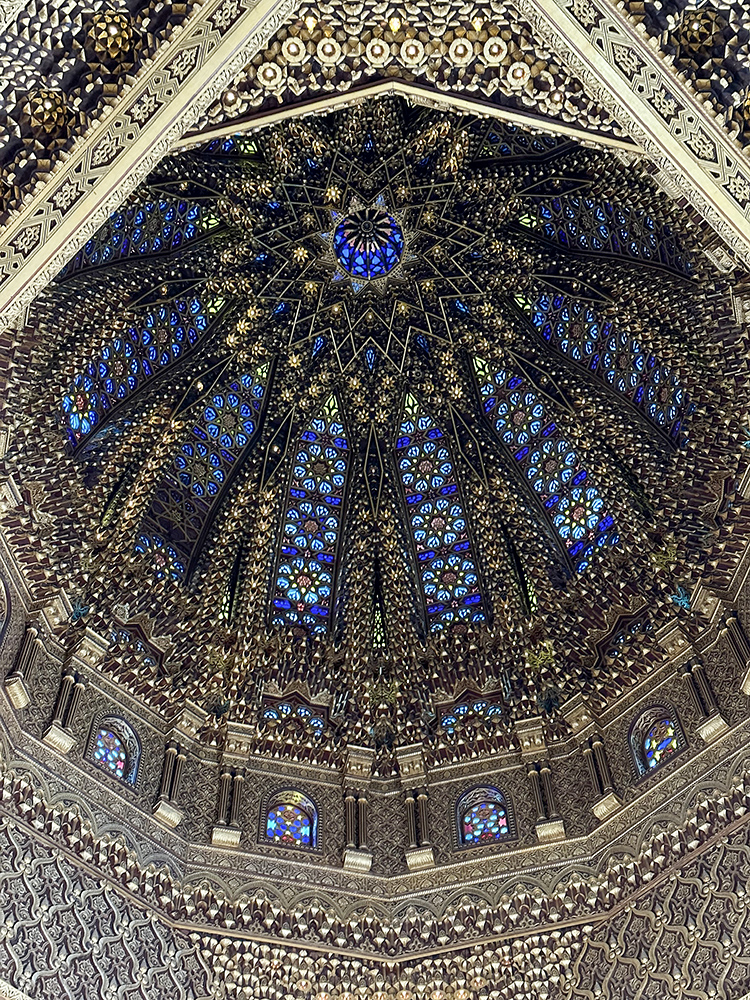
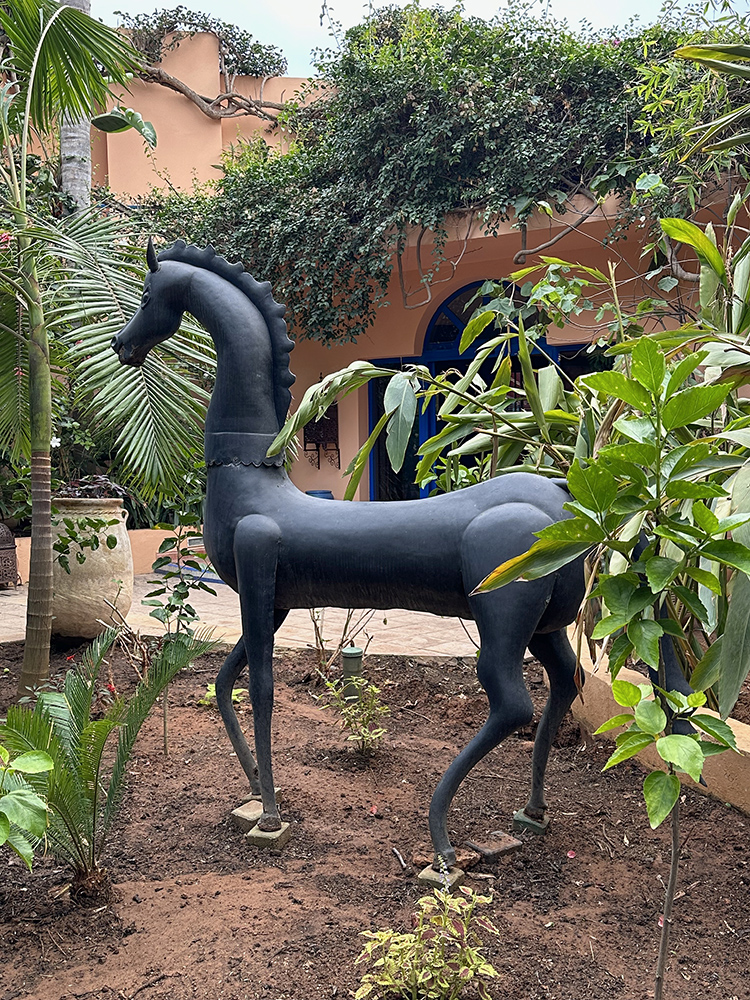
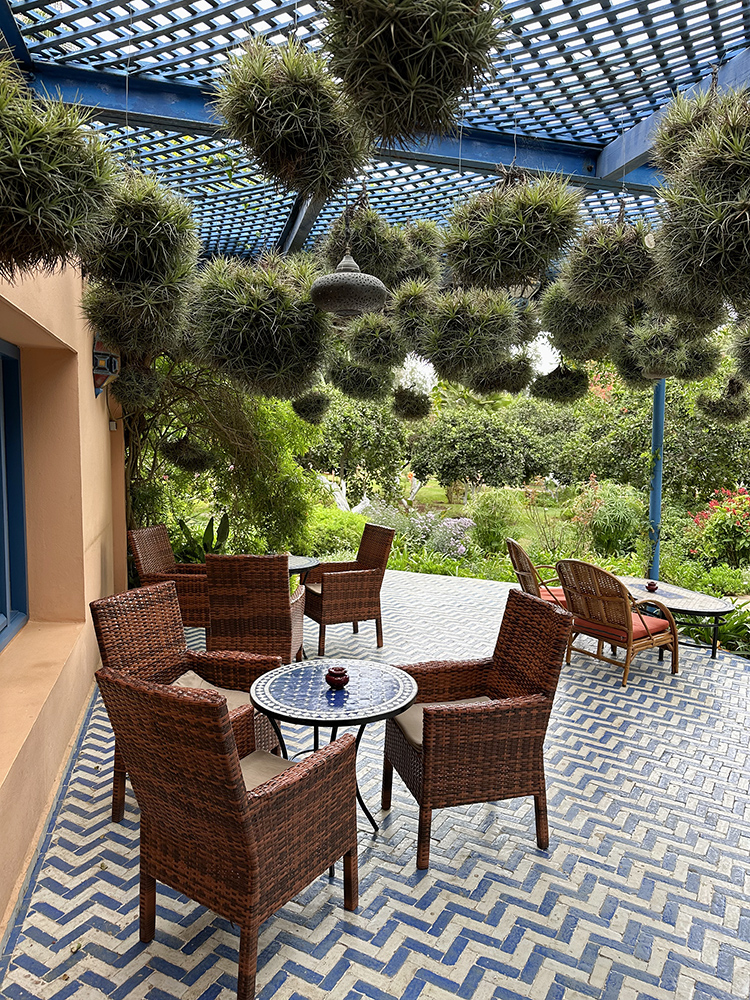
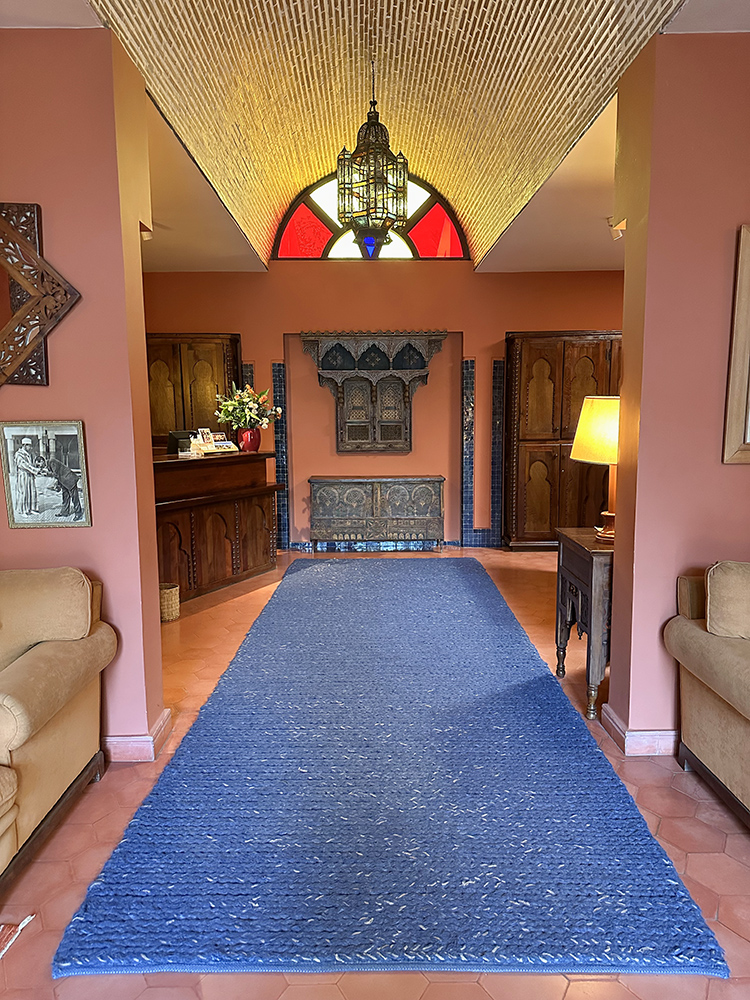
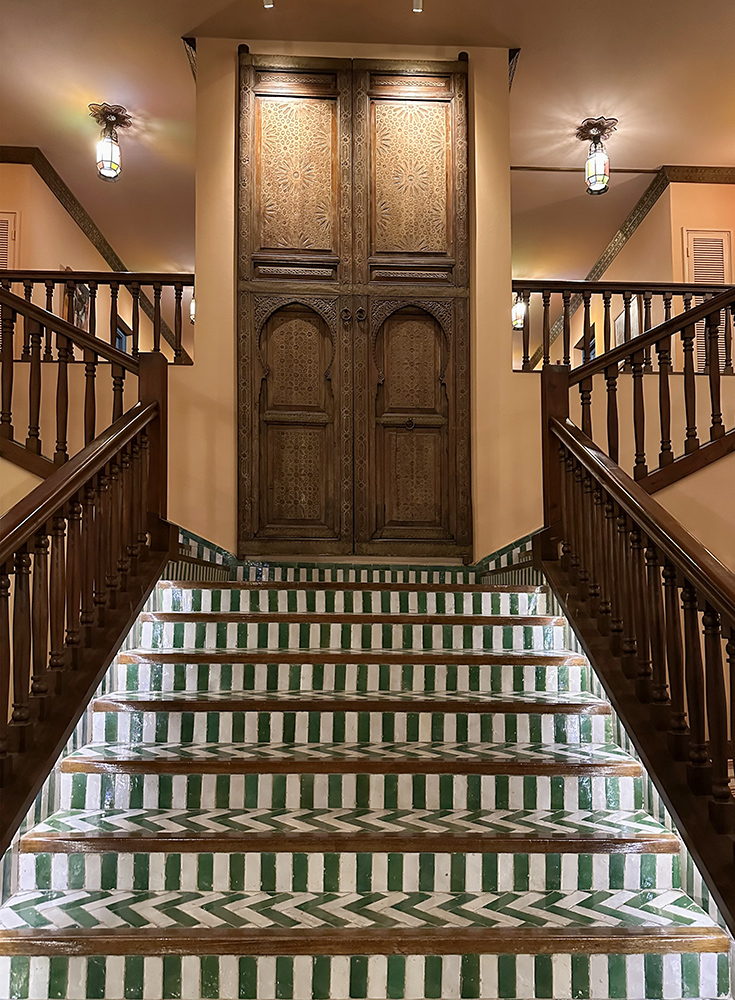
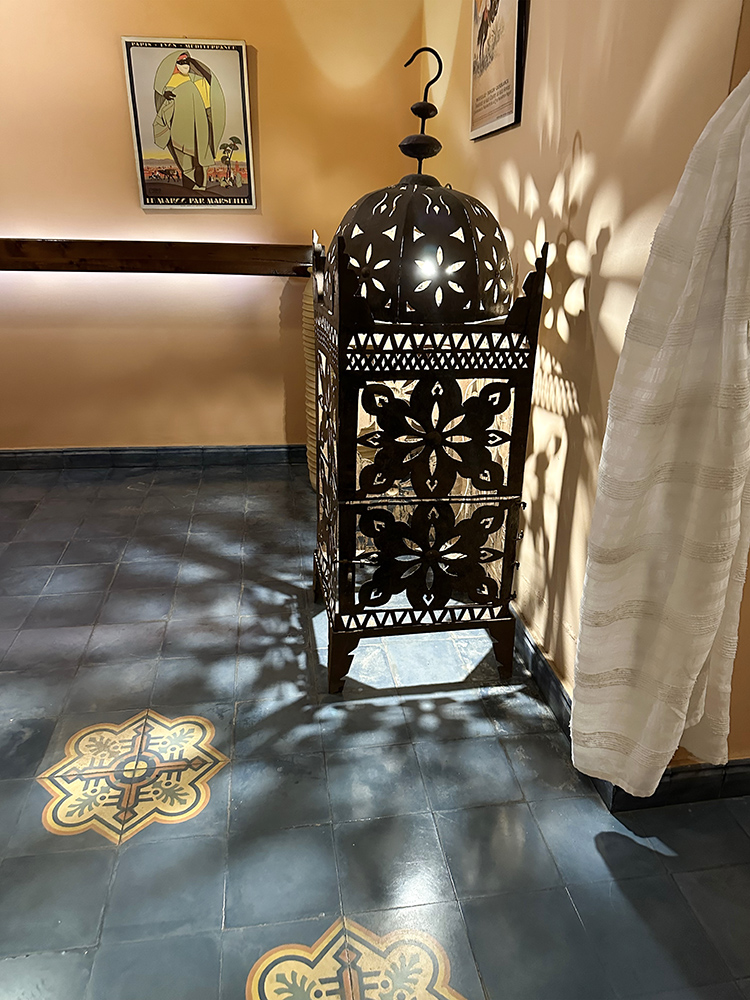
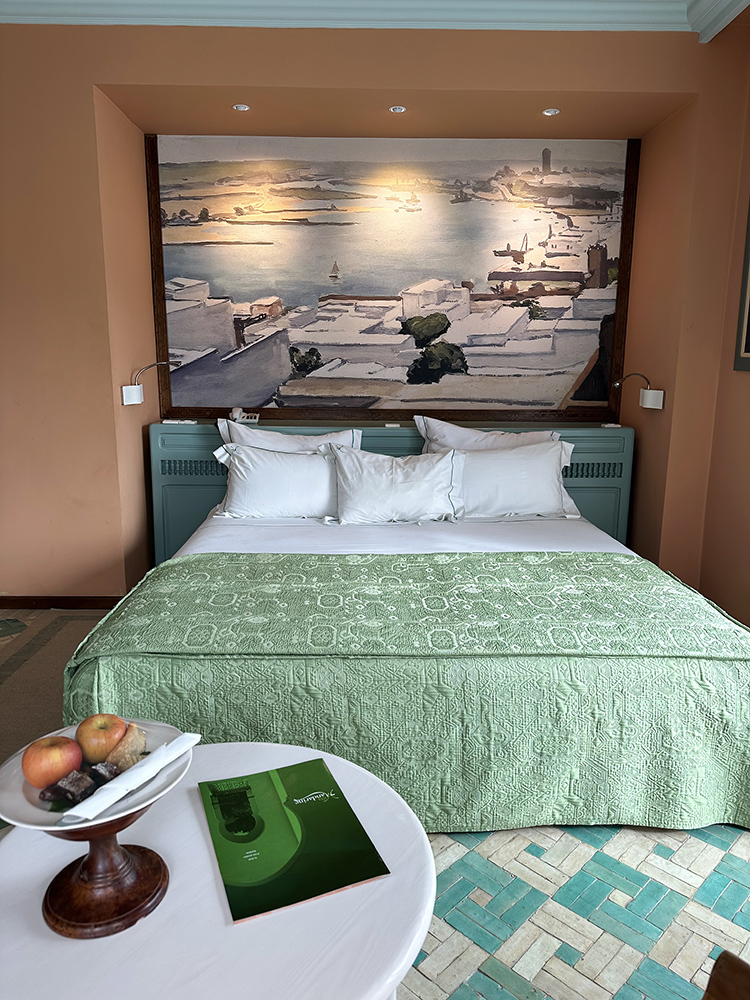
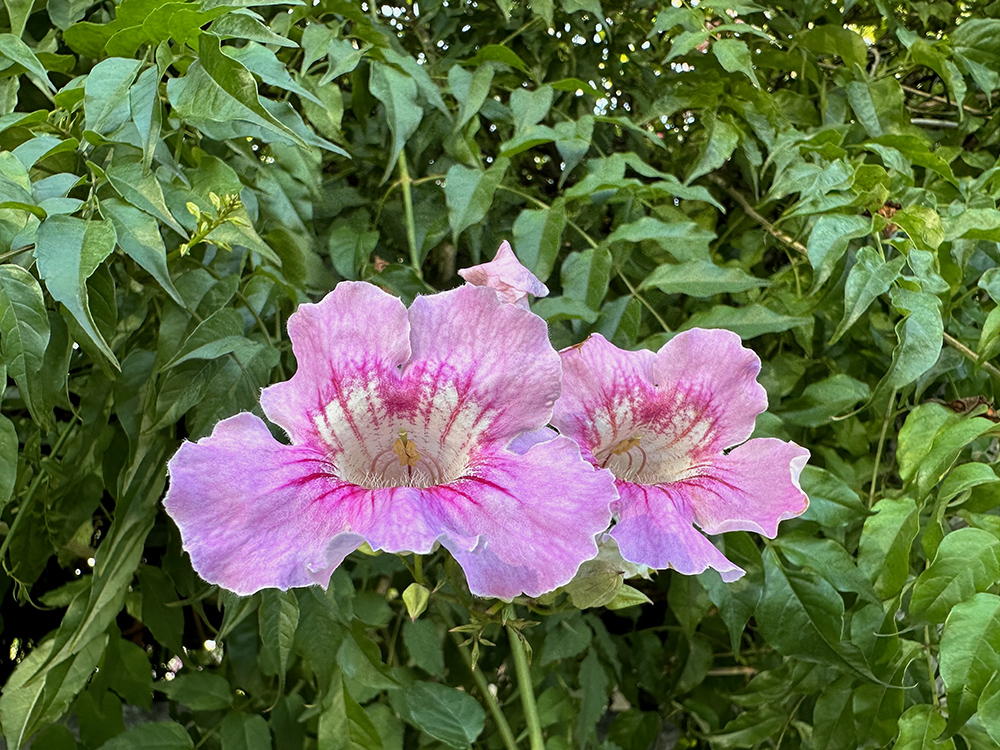
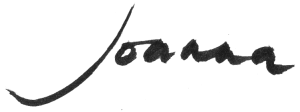
Another wonderful blog, your photos make the adventure come alive for your readers. Thanks xx